Сообщение Rare photos and facts about Sting появились сначала на Old Pictures.
]]>
Sting and Paul McCartney, 1989. McCartney said he would like to be the author of a song like Fields of Gold
Sting nickname stuck to the musician due to his younger years’ performances in a bee costume (check one those photos below). Well, not precisely a bee, but still wearing a sweater with black and yellow stripes.
By the way, another gifted kid, Neil Tennant, co-founder of the Pet Shop Boys duo, went to the same school with Sting. Neil was only three grades younger.
Check out our collection of Early photos of famous musicians.
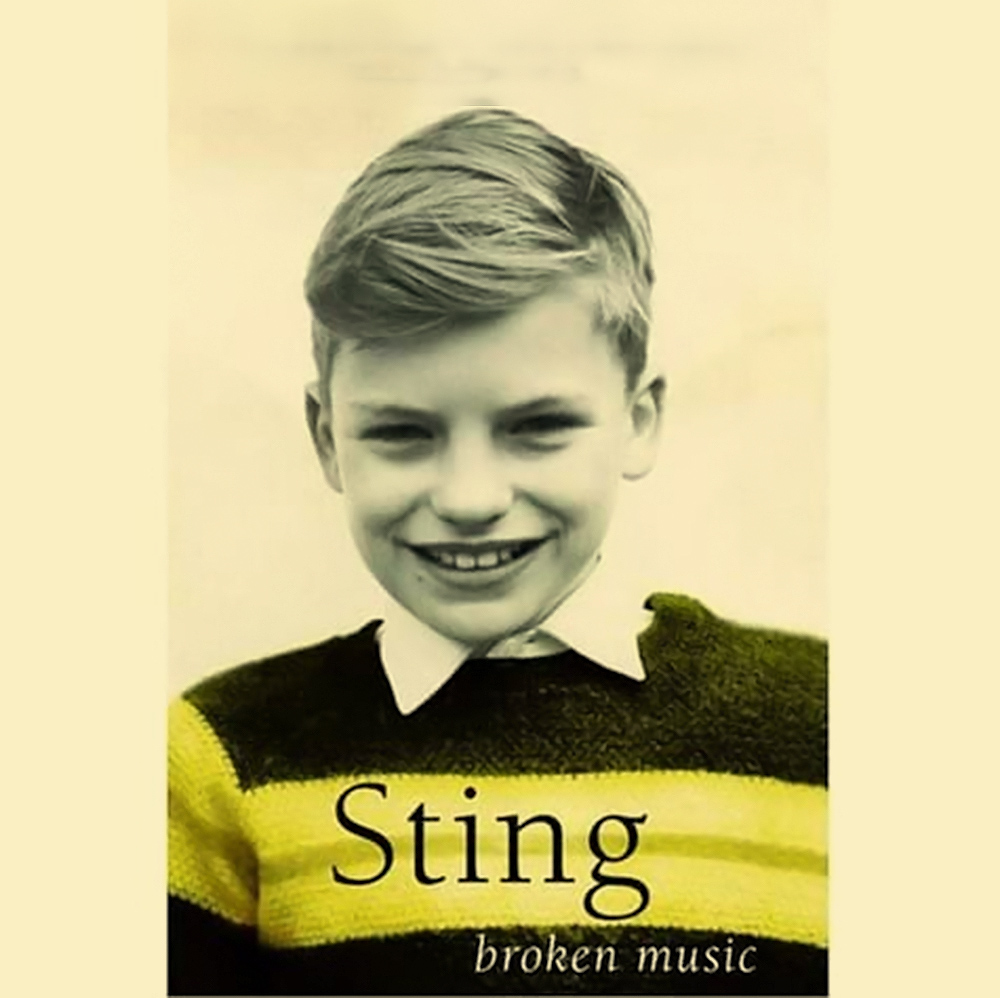
Young Sting in the photo that gave him the nickname for the rest of his life
On October 2, 1951, the singer was born in the north of England in Wallsend’s port city. Like many yet-not-famous-rock-stars, he has tried a million professions: bus conductor, football coach, English teacher. There was a time when he was a tax collector. It was the worst job, according to Sting.

Sting and The Police trio in New York, 1978
In the beginning, Sting shared his popularity with two bandmates from The Police. The band released their first album in 1978, and it also featured the early hit “Roxanne” (which was initially born not as a reggae song at all, but as a lullaby for a baby).

The Police
The Police have always appeared in public in the form of ash blondes. And this image has a bright background!
In 1977, the gum manufacturer Wrigley commissioned a commercial and hired a little-known English director, Ridley Scott. The video required an unnamed rock band with dazzling blonde hair. The unknown guys from The Police agreed to participate. The advertisement did not hit the air, but the group decided to use the white-haired image during their performances.

Sting (center) during the game in the Last Exit group, the mid-70s
Sting had a chance to play chess with Garry Kasparov. He took part in a show match against the grandmaster in 2000 in New York. It was a simultaneous session. It took Kasparov fifty minutes to beat all five.

Madonna, Sting, Tupac, 1994. Three people with a one-word nickname at once.
Sting is a remarkable actor. He starred in Dune, The Bride (he played Dr. Frankenstein there), The Adventures of Baron Munchausen, and, of course, ‘Lock, Stock, Two Barrels.’
And his first film work was the role in the semi-cult drama “Quadrophenia” in 1979, based on the British band’s album The Who (and not a musical at all).
Sting also starred in the 1989 Broadway show ‘The Threepenny Opera.’

Sting with Gianni and Donatello Versace and Elton John. Sting is one of the patrons of the AIDS Foundation, which Elton founded.
Every reference book and Wikipedia will tell you that Sting’s full name is Gordon Matthew Thomas Sumner. However, Sting himself does not associate himself with this name in any way. Back in 1985, a journalist called the musician Gordon in an interview. Sting immediately replied: “My children call me Sting, my mother calls me Sting. Who the fuck is Gordon?”

Two Stings in one photo. Guess who is a musician and who is a wrestler?
Unlike most successful bands that fell apart at their peak due to squabbling and irreconcilable ambition, The Police had a very different case. It’s just that the time has come.
Sting recalled that on August 18, 1983, they performed at the legendary New York stadium Shea (where The Beatles themselves played at the height of Beatlemania). And right during the show, the artist felt that he had conquered Everest. There is no higher mountain to climb. Therefore, The Police were paused, without an official disband.
However, other musicians look at the situation a little differently, assuring that, in any case, they are tired of Sting.

Early photos of Sting and The Police, 1977
The award-winning American wrestling star Stephen James Borden also has a nickname Sting. Interestingly, he claimed it earlier than a musician did. Therefore, when Sting had to buy the rights for the pseudonym from the wrestler.
It is Sting who sings, “I want my MTV” in Dire Straits’s “Money for Nothing.” From now on, you will listen to this song in a completely different way, sorry.
Sting doesn’t want to be featured in a biopic, as is actively encouraged these days. “I am absolutely against it. I don’t want that. I already describe my life through art. “
And Sting doesn’t want his many children to inherit a $ 400 million inheritance. According to the musician, for them, it will become a yoke around their necks. Besides, Sting hopes to spend all this money in full!
Сообщение Rare photos and facts about Sting появились сначала на Old Pictures.
]]>Сообщение Falkland island minefield penguins, 1984 появились сначала на Old Pictures.
]]>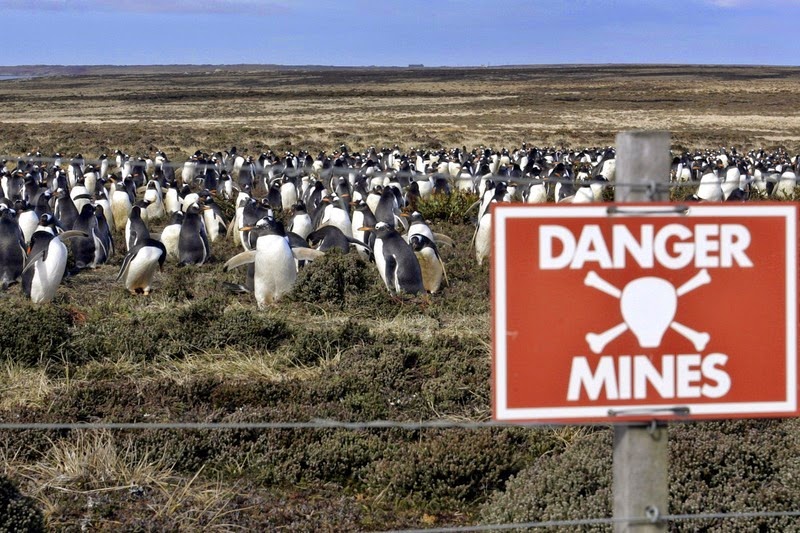 If the Falkland island penguins read the Minefield sign, they wouldn’t start this party here. Yes, it seems like PETA activists don’t teach penguins to read?
If the Falkland island penguins read the Minefield sign, they wouldn’t start this party here. Yes, it seems like PETA activists don’t teach penguins to read?
This picture is quite old, but, believe us, there are not so many photographers in this world who want to take pictures of penguins in a Falkland island minefield. And yes, some of those who tried it got to the better world, probably.
Far Falkland island
Where should we start: with history or geography? So, there are thirteen Falkland Islands, but only two of them are populated. Almost all of the 2800 locals live in the town of Port Stanley. This picture of Falkland island minefield and penguins was taken quite nearby.
How to turn the penguins land into the minefield
In 1982 the government of Argentina was looking for some option to regain its popularity among the voters. Numerous military coups and the economic crisis weakened the country, and a prompt military campaign looked like a viable option. They decided to capture the British Falkland Islands while the Iron Lady, Margaret Thatcher, was a prime minister in the UK. Not the best idea to reclaim this worthless patch of mud in the middle of the ocean. The Brits won, and after three months, the Argentine troops surrendered. All that they left for locals was a minefield.
Argentina planted about 25 thousand mines, and demining was almost impossible due to the soil and landscape’s peculiarities. But the animals benefited from mines since people do not prevent them from breeding here. The rare case when animals are happy with what people’s armies do.
Read more: All Pulitzer Prize photos (1942-1967)

Yes, this minefield is not dangerous.
Сообщение Falkland island minefield penguins, 1984 появились сначала на Old Pictures.
]]>Сообщение The 1964 confrontation of rockers and mods in 30 pictures появились сначала на Old Pictures.
]]>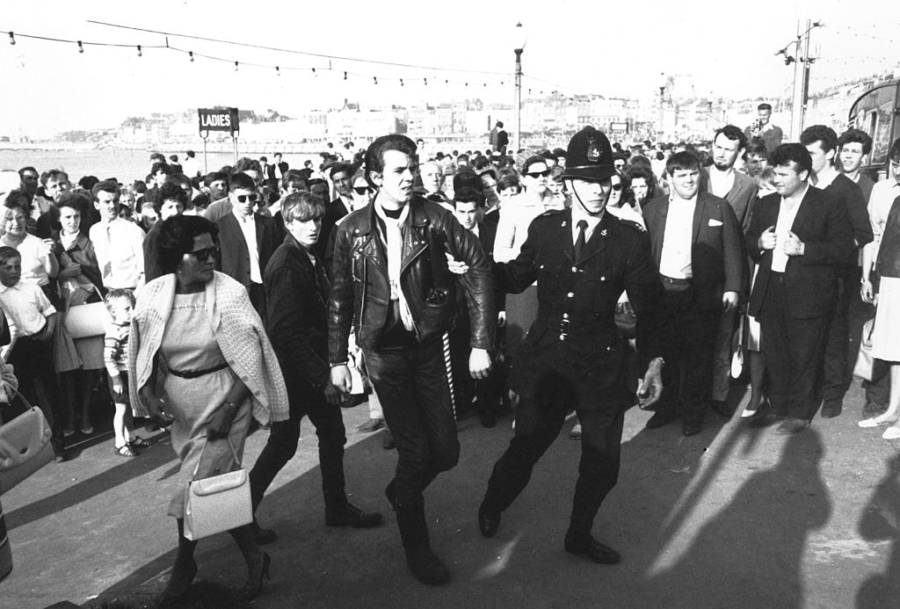
The clashed of mods and rockers in the UK is an integral part of Rock music history. Oldpics published a noteworthy picture of the famous beach fight between mods in rockers in 1964. Here’s why we decided to dig dipper and publish some more excellent photos of this music and cultural phenomenon.
Historical aspect
So, we’re talking about the so-called generation of Baby boomers who just experienced their teenage rebellion. Those post-war kids bothered about their freedom and chance to change the world much more then their parents did.
The rock music popularity gained its strengths, and the youth split onto two primary social groups: mods and rockers. The mods were the sons of the style. They preferred R’n’B, and sophisticated psychedelic rock wore skinny ties and suits. Mods liked fancy scooters too and enhanced them the way that only Xibit could do. The rockers were the tough guys; leather jackets, greased hair, and heavy motorcycles.
The Easter war of Mods and Rockers
On Easter weekend in 1964, the small clashes turned into a massive stand-off. The hottest battles emerged at the beaches of Brighton and Margate. Hundreds of teenagers crowded the resort areas for a reckless fight.
Social researcher Stanley Cohen will call it a moral panic later. The confrontation was ignited by media and officials, who forecast the clashes all around the UK. It seems like everyone who read the newspapers during those days had a feeling that the war between mods and rockers is inevitable. The sociologist believes that many of the fights could never happen if the media didn’t spread the youth’s anxiety.
Let’s cite the words of the 18-year-old John Braden: “Yes, I am a Mod, and I was at Margate. I’m not ashamed of it − I wasn’t the only one. I joined a few of the fights. It was a laugh. I haven’t enjoyed myself so much for a long time. It was great − the beach was like a battlefield. It was like we were taking over the country. You want to hit back at all the old geezers who try to tell us what to do. We want to show them we’re not going to take it.”
Read more: Rock bands photos before they became popular
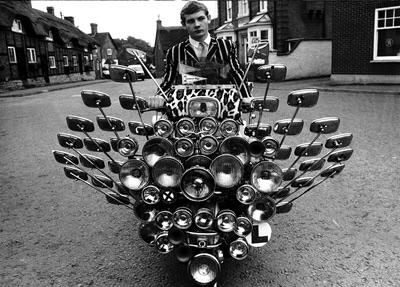
This mod geared his scooter in a special way!
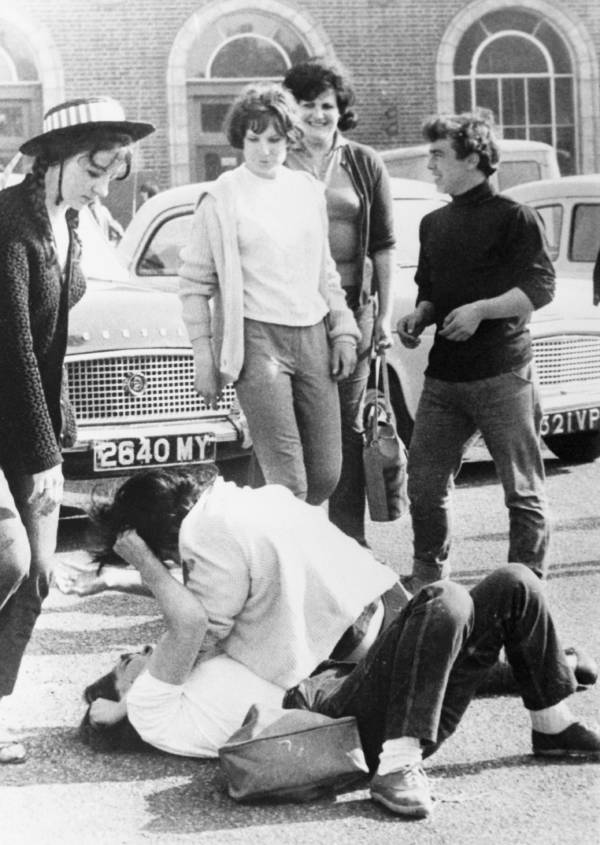
These young ladies represent Mods and Rockers camps. And it wasn’t a catfight in any sense.
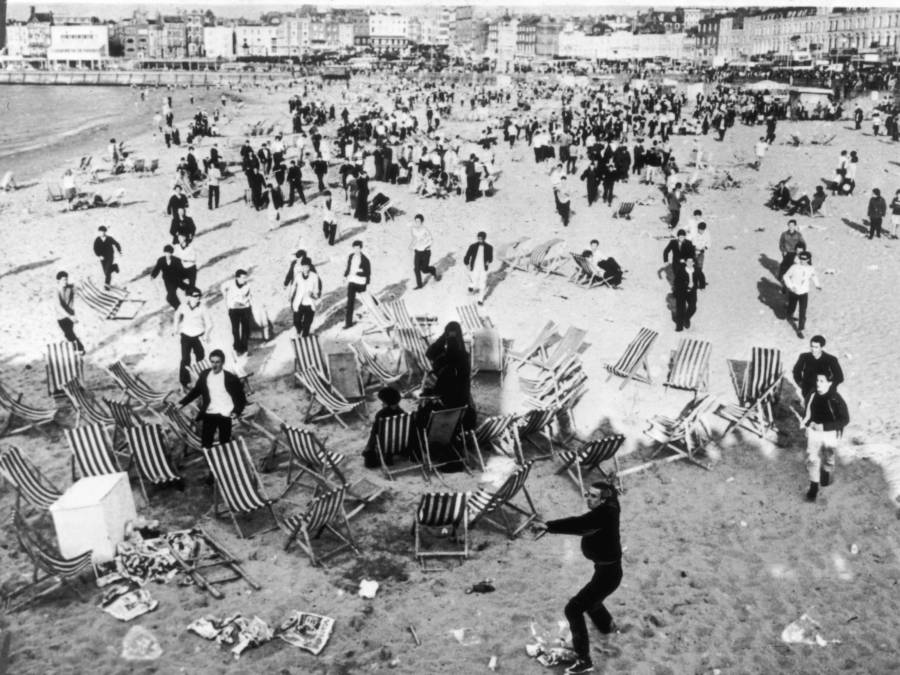
The famous brawl at the Brighton beach. The mods were victorious on that day.
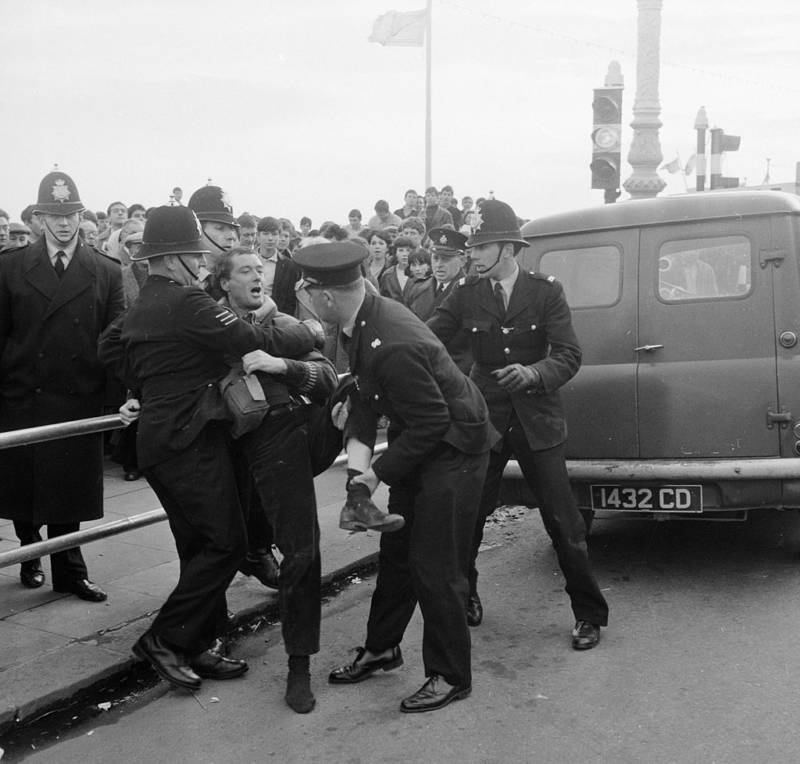
Police tried to split mods and rockers so that they stopped fighting. In some cases, the most aggressive individuals (in this photo it’s rocker) were forced to quit the ramble.
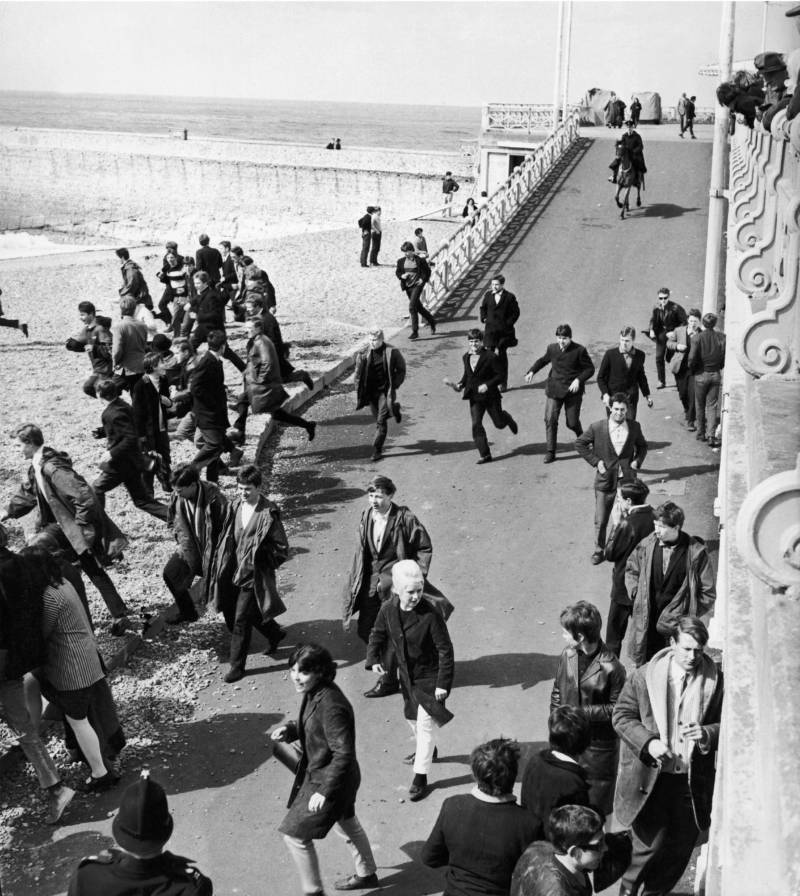
Mounted police officer pacifying the crowd of mods.
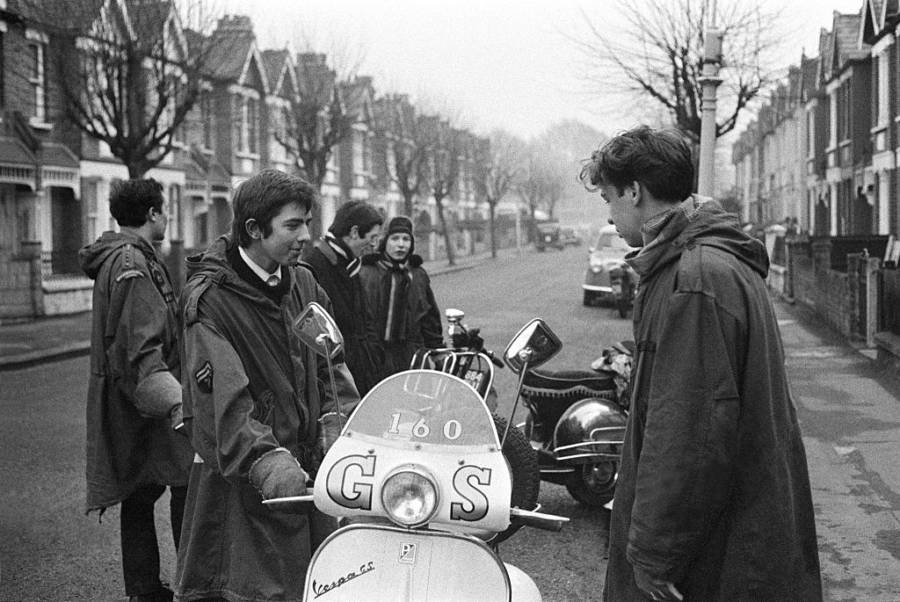
Ungraded scooters were a special thing for mods.
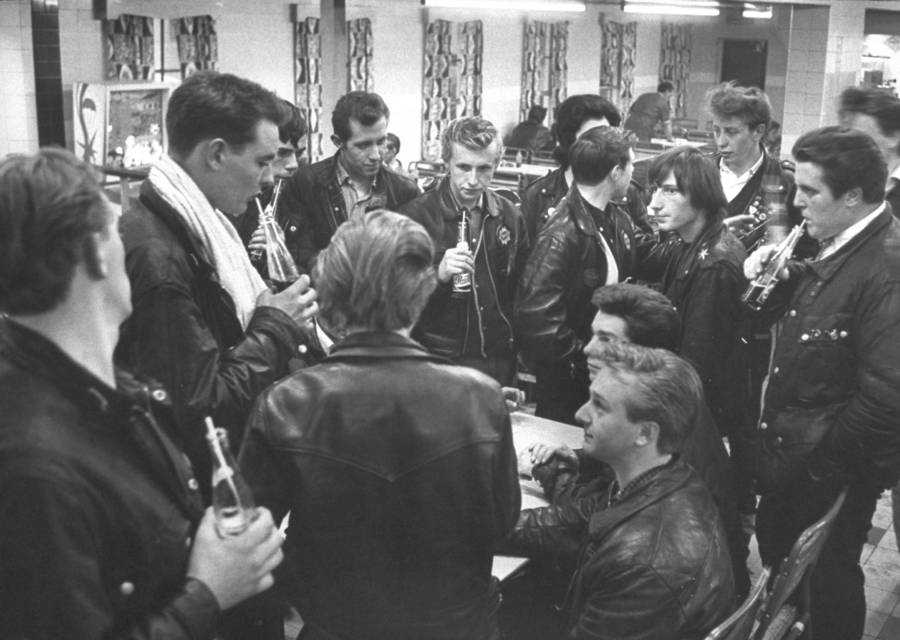
Rockers enjoy a soda at a roadside cafe.
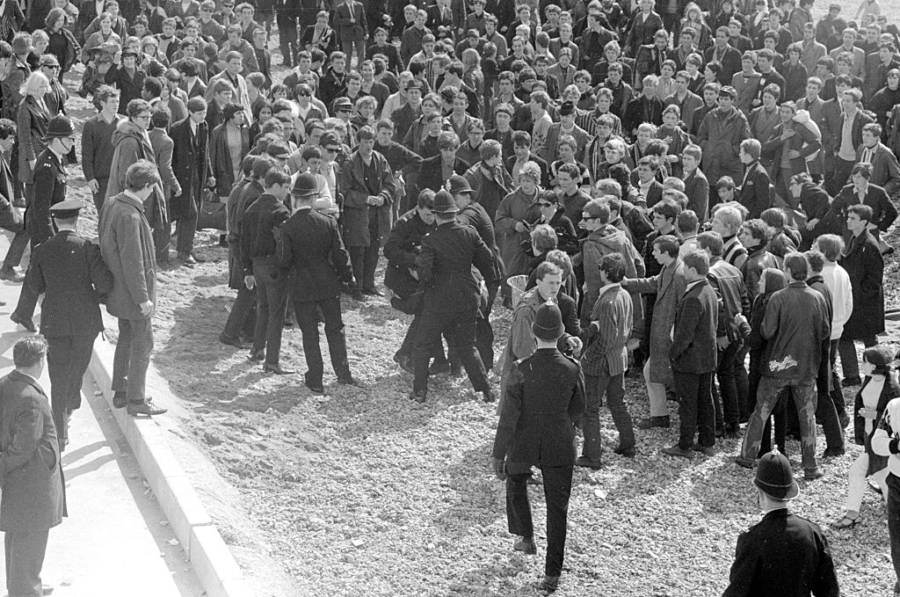
Interestingly, how several light-armed policemen could calm so numerous ready-to-fight crowd.
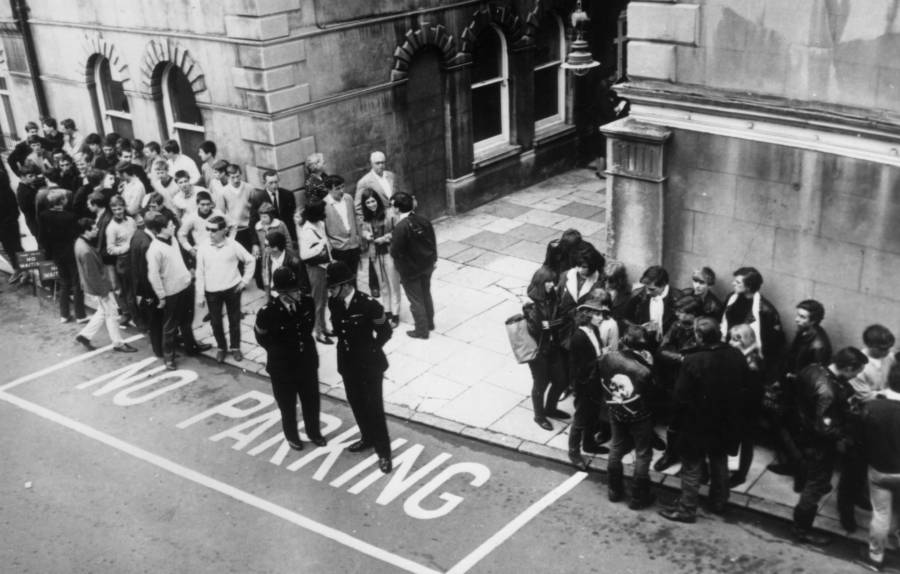
Splitting two aggressive social groups.
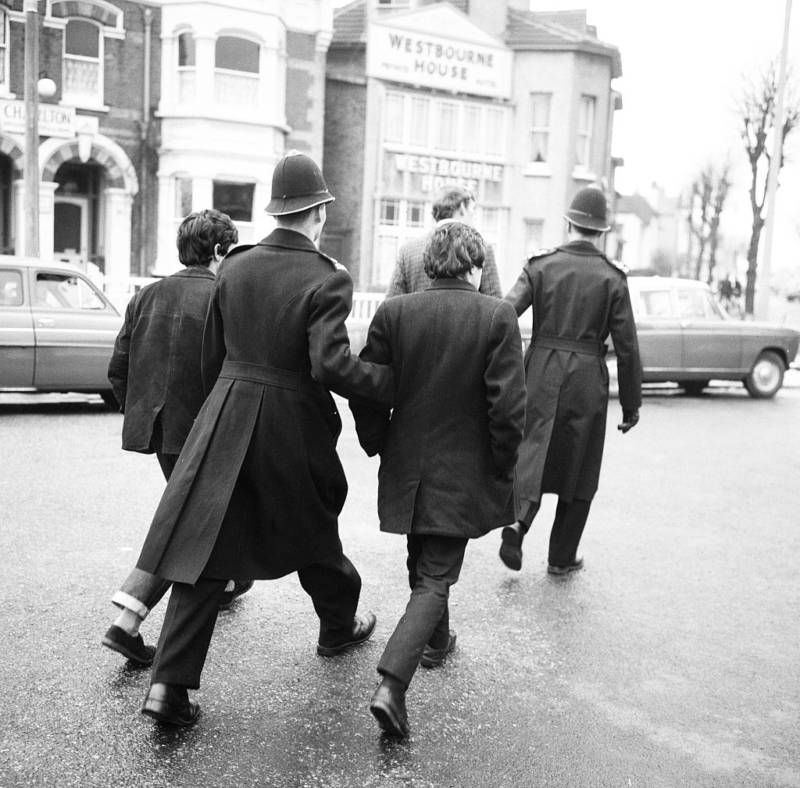
The most aggressive mods and rockers could spend a few days under arrest.
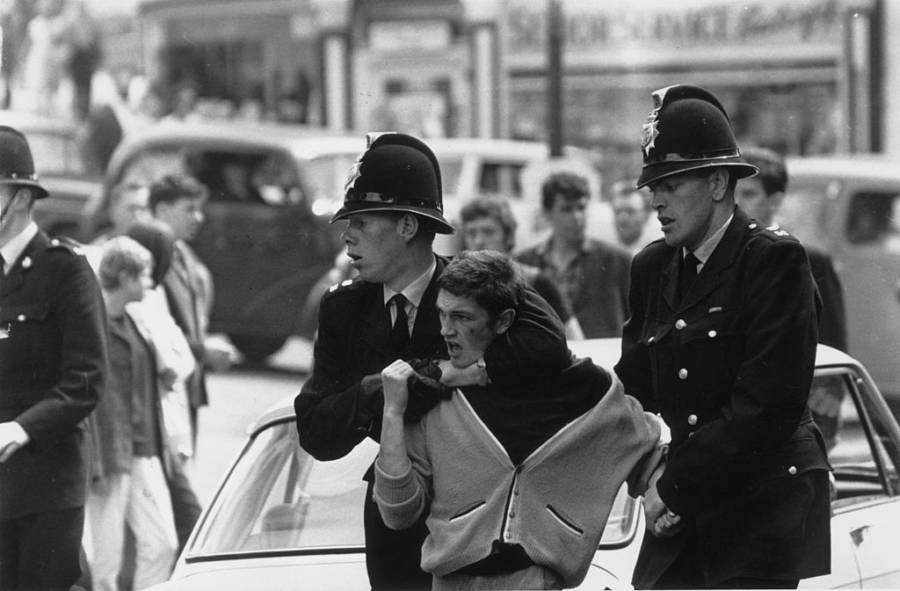
This bruised and beaten mod wants back to the fight.
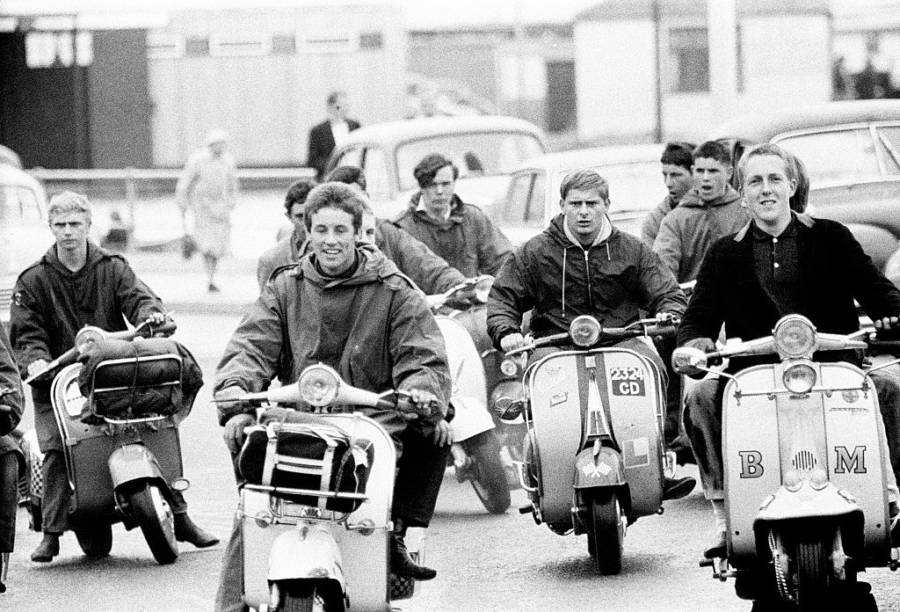
Mods on scooters ride down the streets of England.
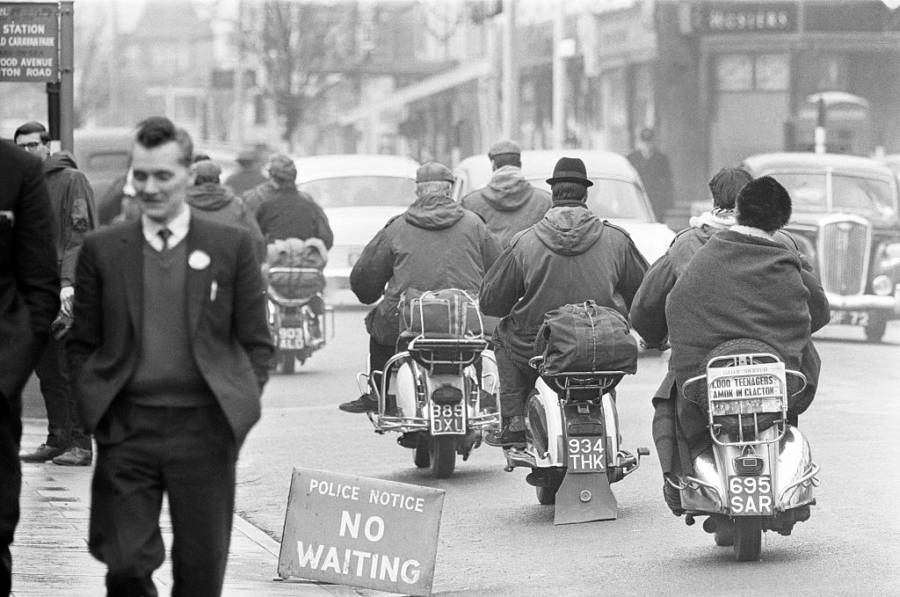
The brawls had limited time. It seems like there were no mass fights after the daily sessions.
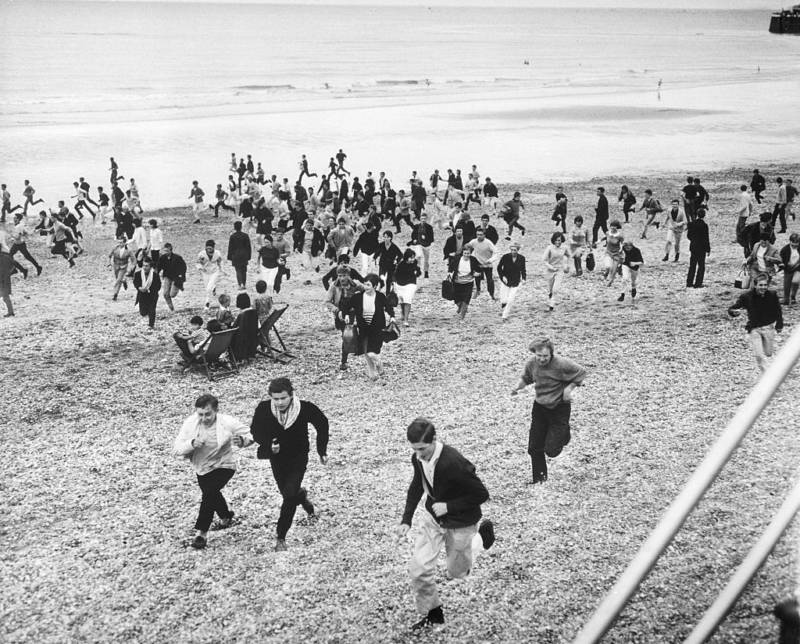
It’s a brawl time!
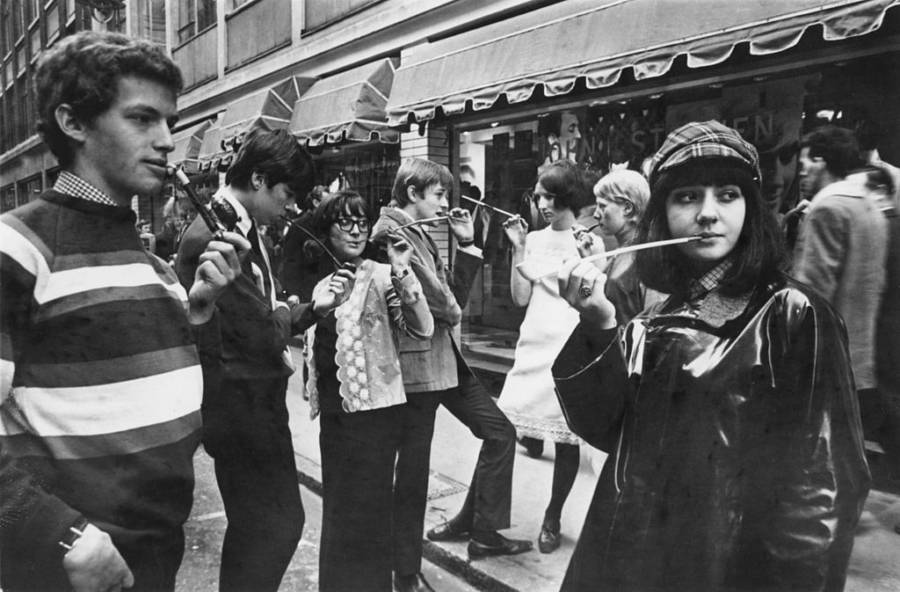
No surprise, Mods preferred fashion pipes to cigarettes.
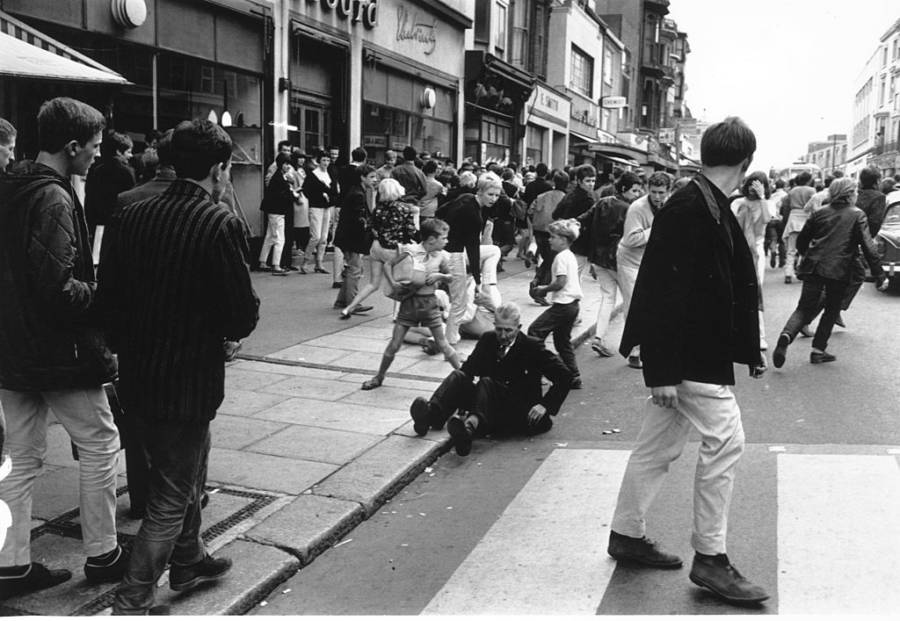
There’s no land for an old man when rockers and mods brawl.
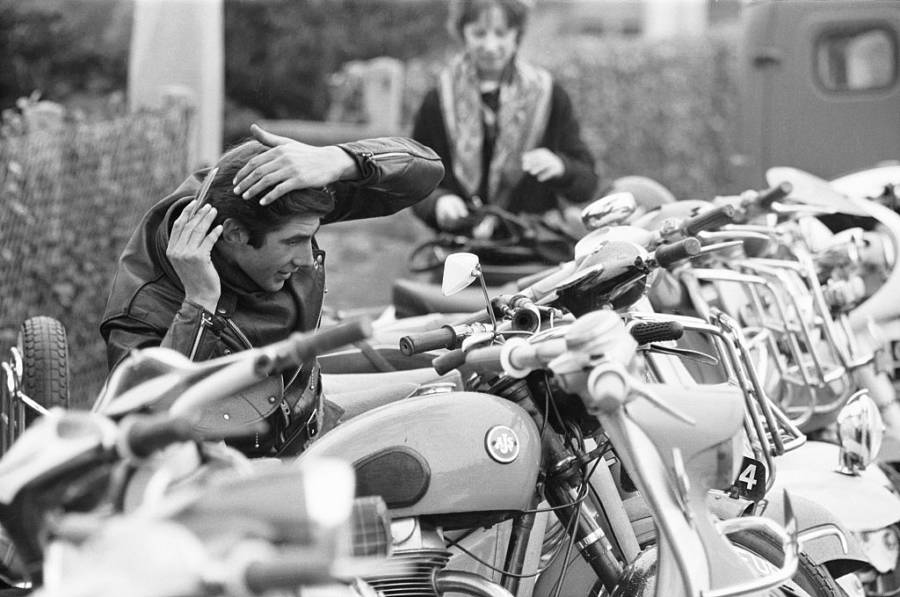
A risky move: this rocker uses the mirror on a mod’s scooter to brush his hair.
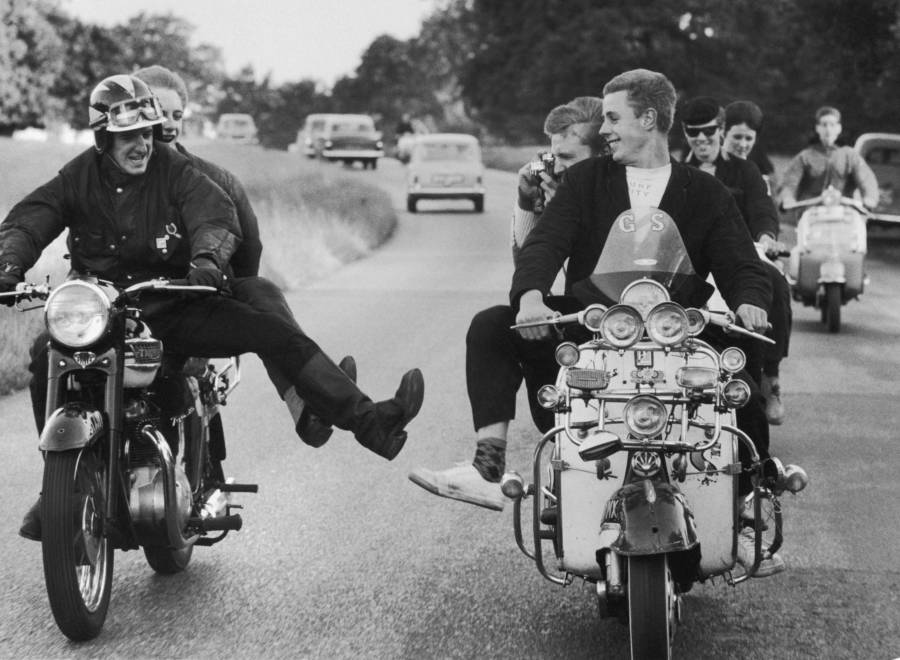
The best illustration of how different bike outlook could be.
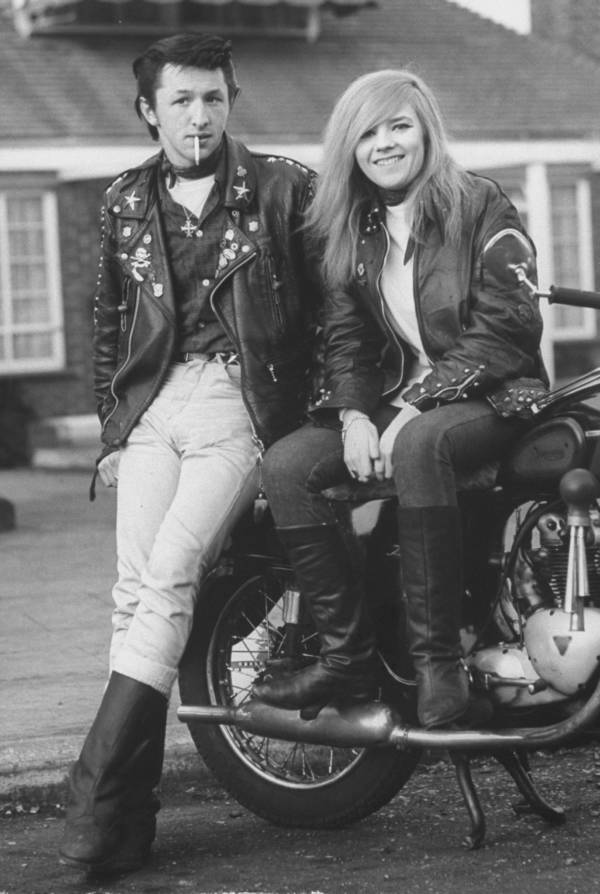
A rocker and his girlfriend pose for a Life Magazine photographer, leaning against their bike.
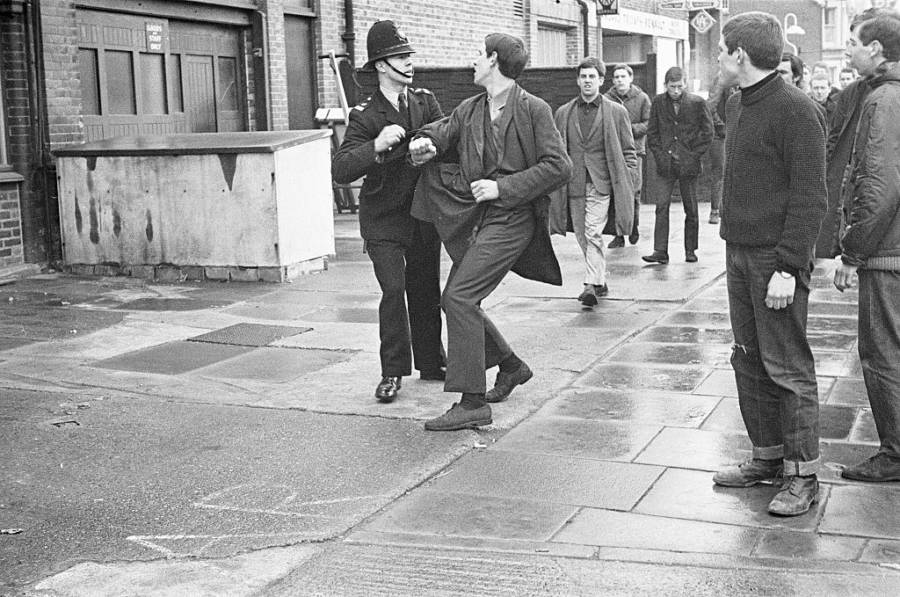
This mod will spend several days under arrest.
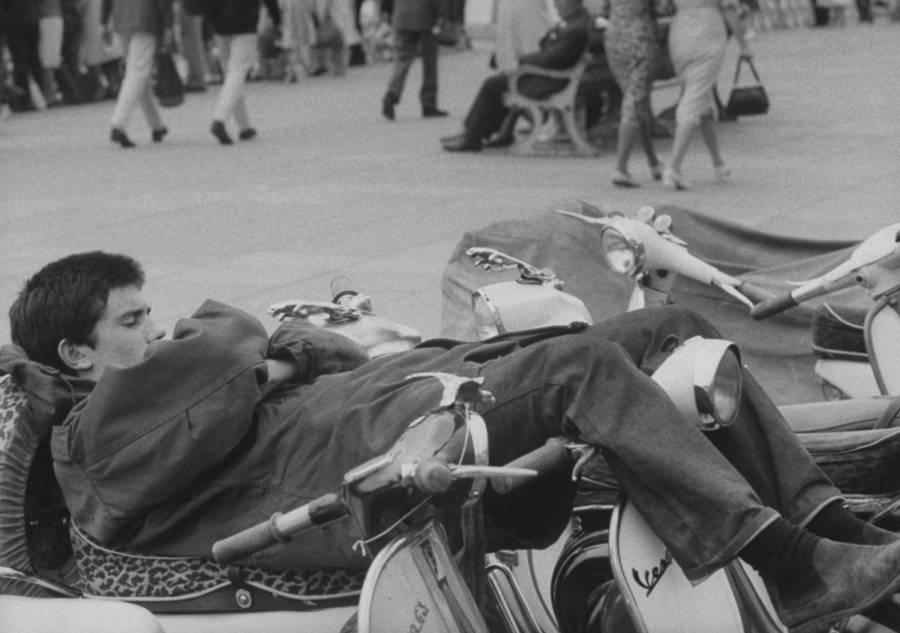
A short break between the fights.
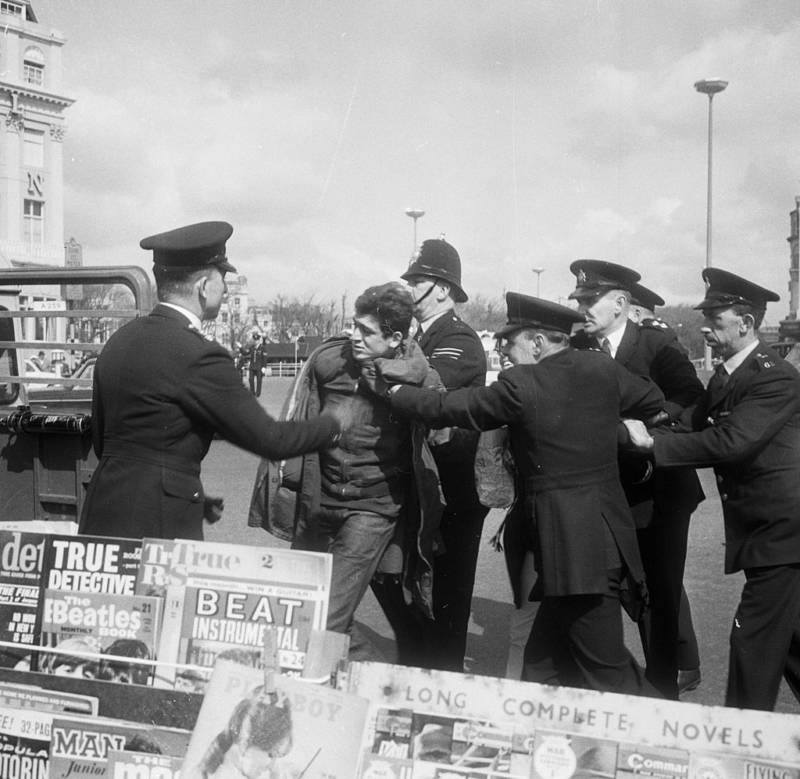
Police officers pulling the most aggressive mod out of the fight.

A mod and a rocker come to blows in the middle of the street.
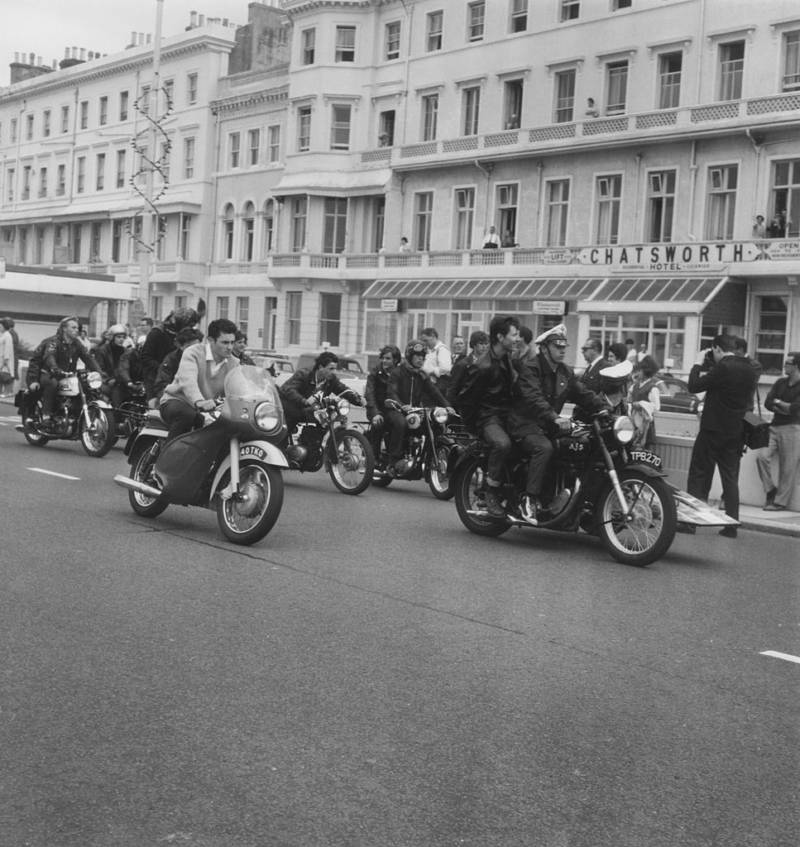
Mod pack riding their bikes.
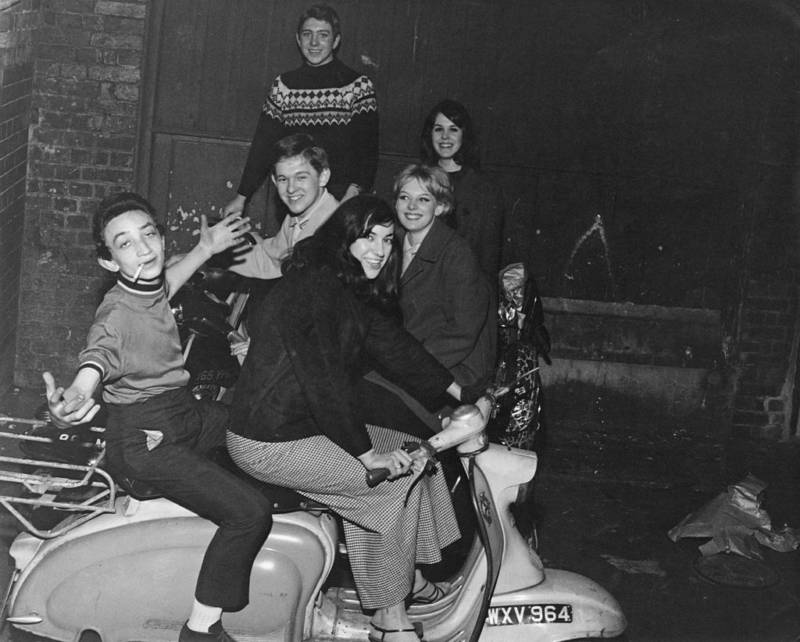
A mod party on the scooter!
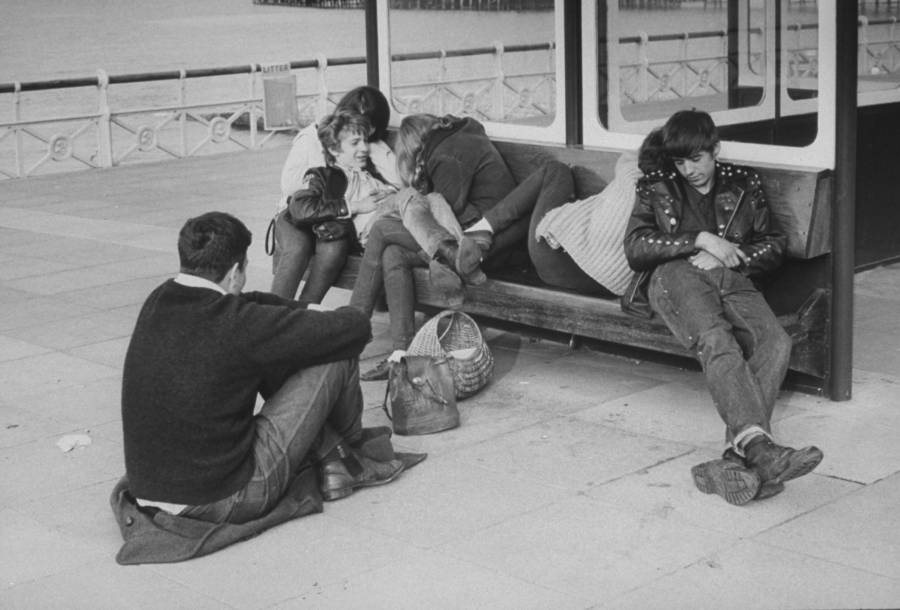
A group of rockers relaxes on a bench.
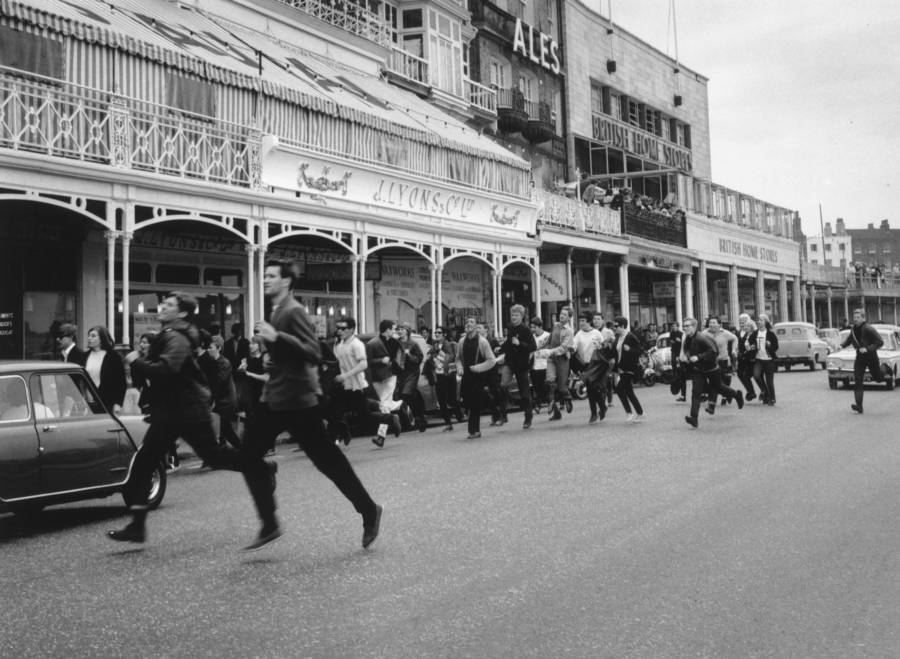
Mods could retreat the battle too.
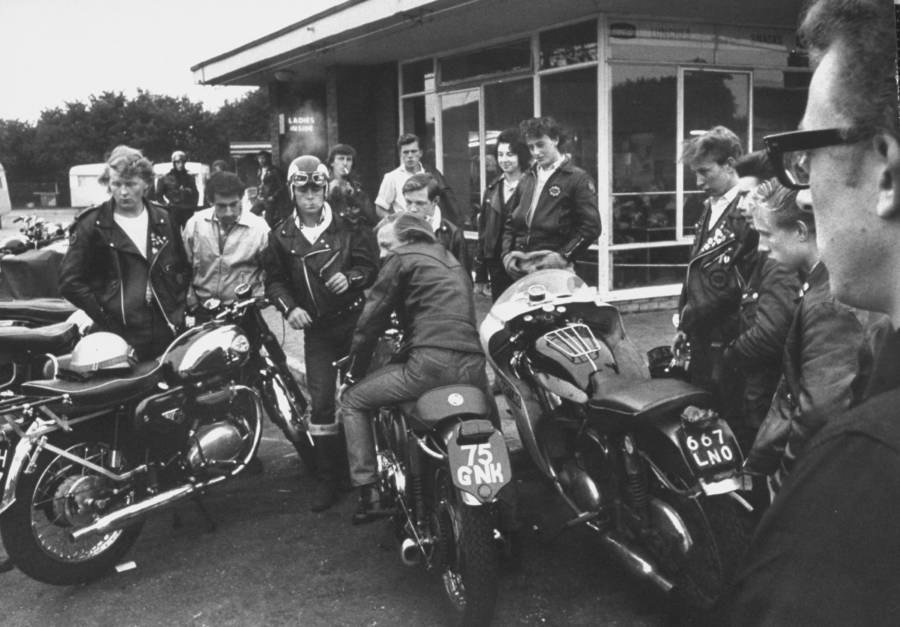
Leather jackets, heavier bikes… Rockers!
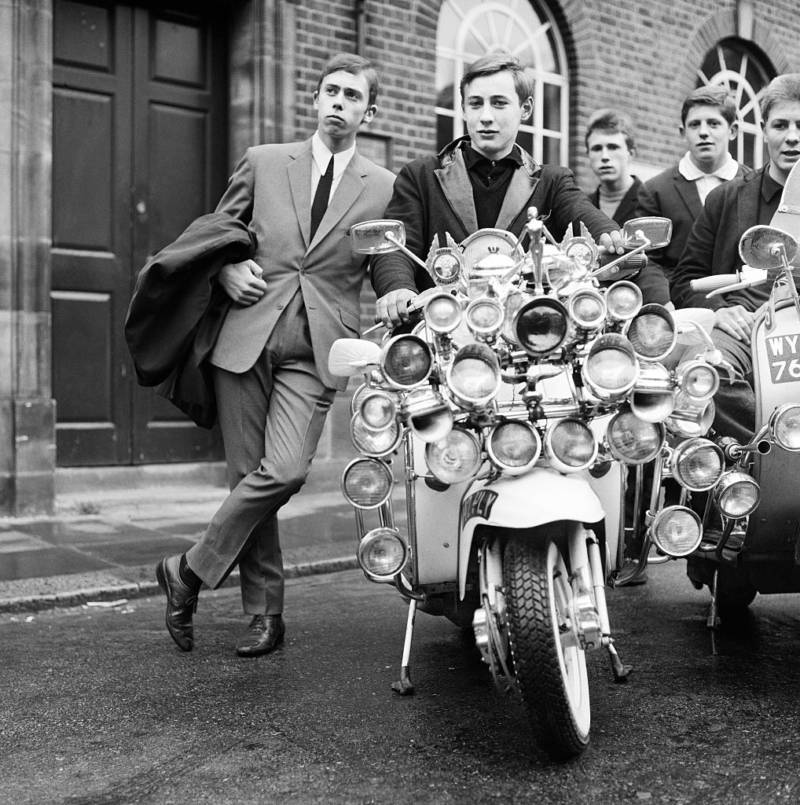
This bike is a fancy one!
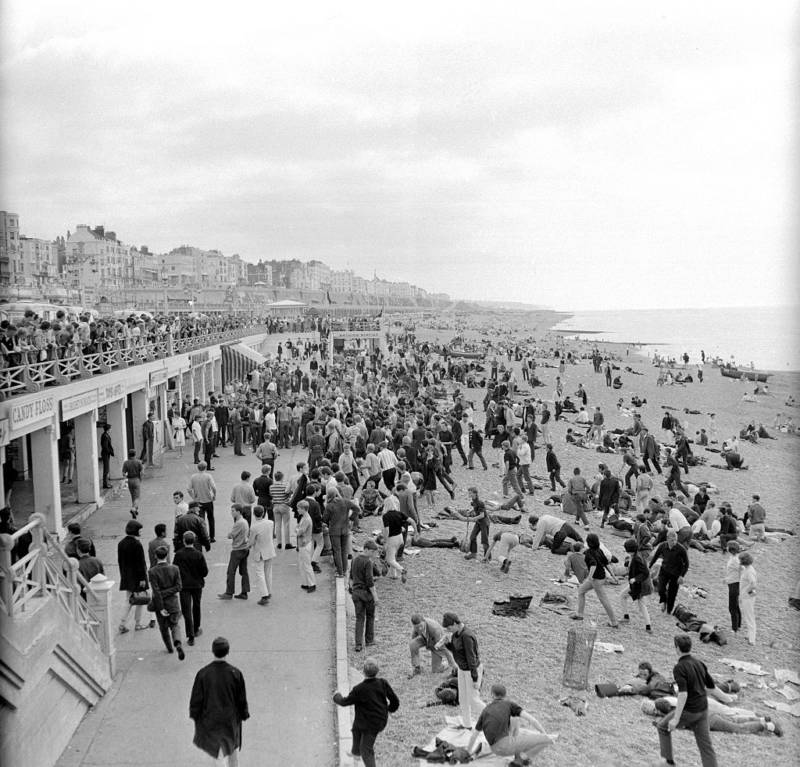
A crowd swarms to join a massive fist-fight on the beach.
Сообщение The 1964 confrontation of rockers and mods in 30 pictures появились сначала на Old Pictures.
]]>Сообщение Tennis Girl: the story behind the iconic poster photo, 1976 появились сначала на Old Pictures.
]]>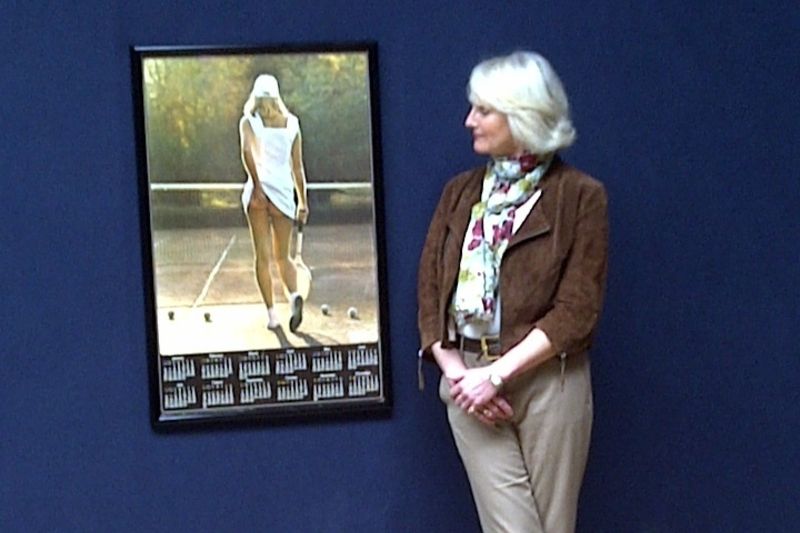 We believe that the ‘Tennis Girl’ photo increased the number of those wishing to become tennis players in 1976. Later this image became an iconic one, and we’ll hardly find a person on the planet who has not seen it. After all, the picture “Tennis Girl” became the best-selling in the printing giant Athena. Its circulation is calculated in the millions. And we are talking about legal copies only! This image is nothing like Pulitzer Prize photo or outstanding historical picture, but there is also an interesting story behind it.
We believe that the ‘Tennis Girl’ photo increased the number of those wishing to become tennis players in 1976. Later this image became an iconic one, and we’ll hardly find a person on the planet who has not seen it. After all, the picture “Tennis Girl” became the best-selling in the printing giant Athena. Its circulation is calculated in the millions. And we are talking about legal copies only! This image is nothing like Pulitzer Prize photo or outstanding historical picture, but there is also an interesting story behind it.
Fiona Butler, a Tennis Girl that never played tennis
The picture was taken at the tennis court of the University of Birmingham. 18-year-old Fiona Butler was acted as a Tennis Girl. It was a very warm September, and Fiona agreed to pose for a pin-up photo series by her 30-year-old boyfriend, photographer Martin Elliot.
An Iconic Tennis Girl photo
The preparation for the photo session took almost no time. Fiona asked her friend Carol Knott for a tennis dress; Carol also gave Fiona her racket. As you may guess, Fiona Butler never played tennis before. Moreover, she gave everything back after the photo session and a box of chocolates as a bonus. Father lent Fiona sports slippers, and we suspect the parent little knew about the nature of the photo session. Butler’s family dog borrowed some old tennis balls, which he used to play. Well, that’s all you need to take an iconic Tennis Girl photo.
There were only the photographer and the model during this photo session. “I shot only one film,” Elliot recalled years later. “This is not enough for a photographer. I hoped that I captured a good shot. ” Well, he captured one. Elliot showed the shot to the Athena photo agency, and they bought it immediately.
Tennis Girl started as a poster
“Tennis Girl” picture appeared in the calendar of the company in 1977 for the first time. It has stayed at print kiosks, bookstores, teenagers’ rooms, and truckers’ cabins since then. The photograph was especially popular as a poster. They sold it at 2 pounds for a copy. The Tennis Player even survived the company’s collapse in 1994.
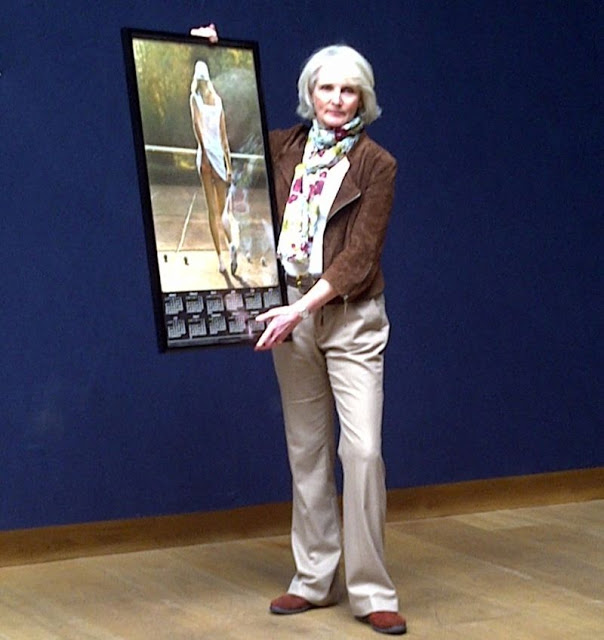
Fiona Butler holding a photo
What happened then?
And what happened to the model and photographer? Fiona and Martin were together for three years. Martin became a respected photographer and died in 2010 of cancer. Fiona is married, has three children, and works as an illustrator.
Fiona never received royalties from big photo sales, but she has no regrets about it. In general, she recalls his sensational model experience with great warmth: “I was amazed that what we did so easily that September afternoon became so popular … I like that this photo for its mysterious atmosphere.”
Carol Knotts, who once so successfully borrowed a dress and a racket, sold them at an auction at Wimbledon in 2014. The racket price was £ 2,000, and the dress cost £ 15,000.
Of course, photography, like any celebrity, is accompanied by scandals. So, in 2015, Peter Atkinson from Cornwell made a statement that he took a photograph.
Сообщение Tennis Girl: the story behind the iconic poster photo, 1976 появились сначала на Old Pictures.
]]>Сообщение Punkah Wallah: interesting facts and pictures появились сначала на Old Pictures.
]]>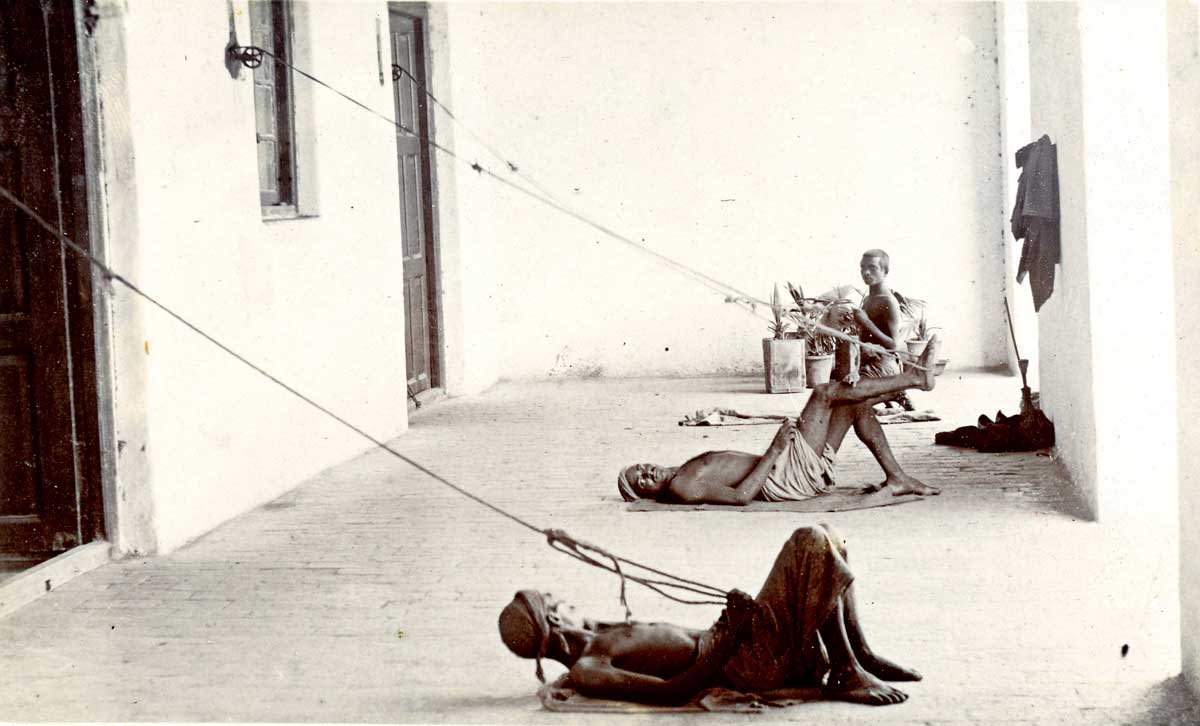
Punkah Wallah was a replacement for the air conditioners for the wealthy people hundreds of years ago. Basically, punkah is a large fan, while Wallah is a servant who’s moving it, usually with his legs.
Punkah Wallah seems to be the most boring job ever. Don’t forget it when complaining about our work: boring, paying little… So, from now on, when you feel that your career is not good enough, remember the Punkah Wallah.
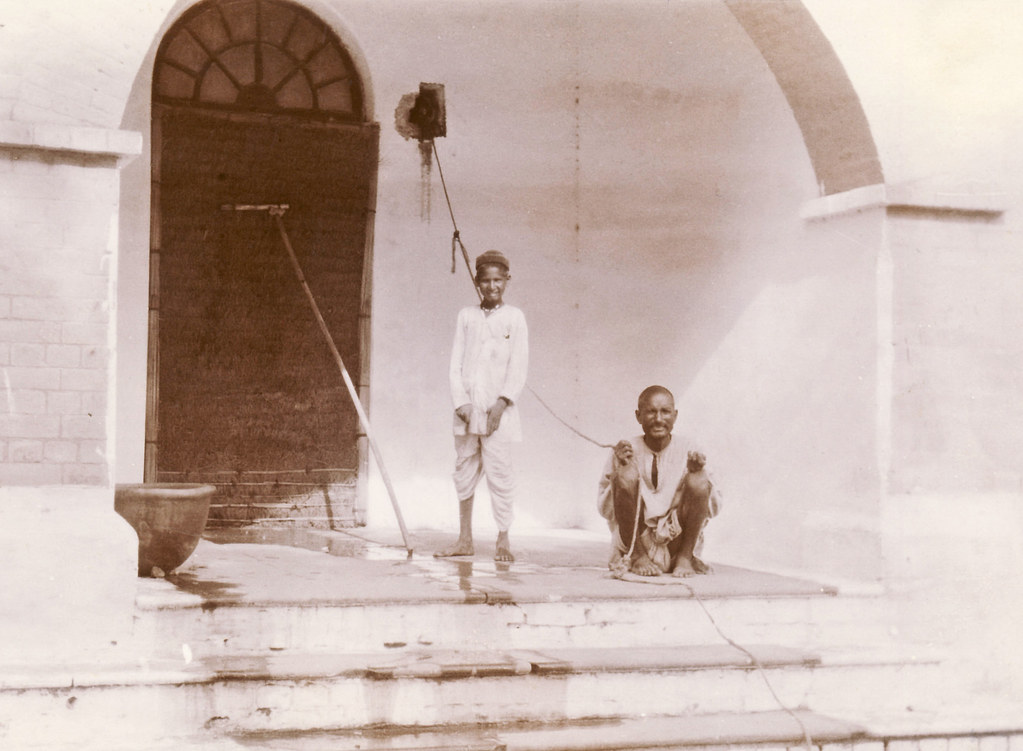
Punkah Wallah during a short break. Usually, moving fans was boring but not exhausting. Colonists could afford to hire extra workers to make their job easier.
India is a homeland for Punkah Wallah
As you can imagine, India is the land of the dominating heat. This fact frustrated Victorian Era English colonialists, who had a particularly hard time due to their genetic habit to the relatively cold climate.
And since electricity was a rare beast in the 19th century, Punkah Wallah was the only air conditioning option. The cheap labor in India and your colonialist status was a plus.
The task of the fan-boys was as simple as anything boring: they had to set move giant fans – Punkahs, which were hung from the ceiling of living rooms (and sometimes entire churches or other indoor areas).
Lots of different punkahs were in use, tailored or wooden ones. I must say that wooden ones were more dangerous: the ropes that linked the punkah to the ceiling could collapse due to constant friction, and it could fall right on the gentlemen.
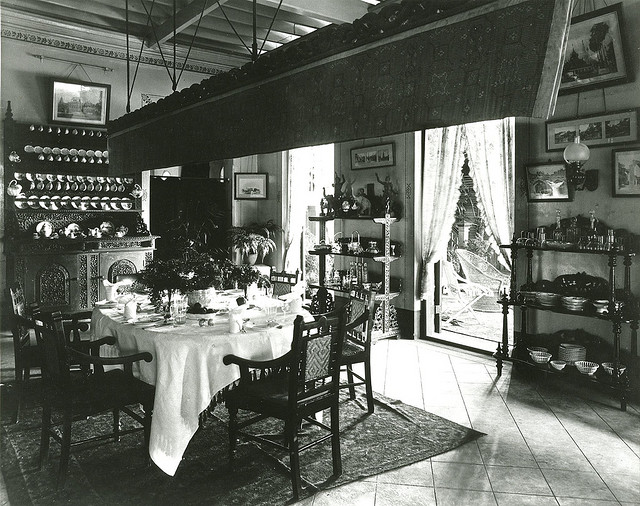
Punkahs could be that’s large. Usually, such a massive fan was moved by three persons.
The remote control
Sometimes the Punkah Wallah could sit in the same room as the fan was pulled with their hands. But in this main photograph, taken in the 1900s, Wallahs are moving fans with legs. In this case, Punkah Wallah could stay behind the wall of the room, and the strings of the fan are pulled from the outside.
Punkah Wallah was usually deaf. Unlike ordinary servants, Punkahs could not be sent out of the room when the conversation took on a secret nature or a delicate matter – of course if the gentlemen did not want to suffer the heat.
Electricity was a Punkah’s profession killer. And this is clearly not the case when at least someone misses the extinct profession.
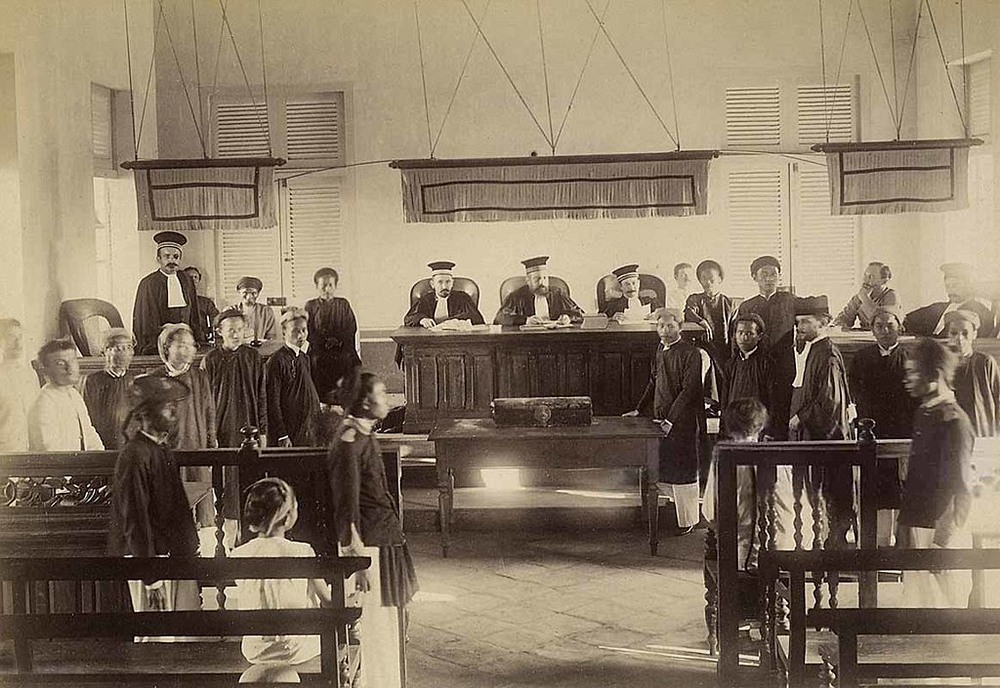
Punkah air-conditioned courtrooms as well as other administrative units.
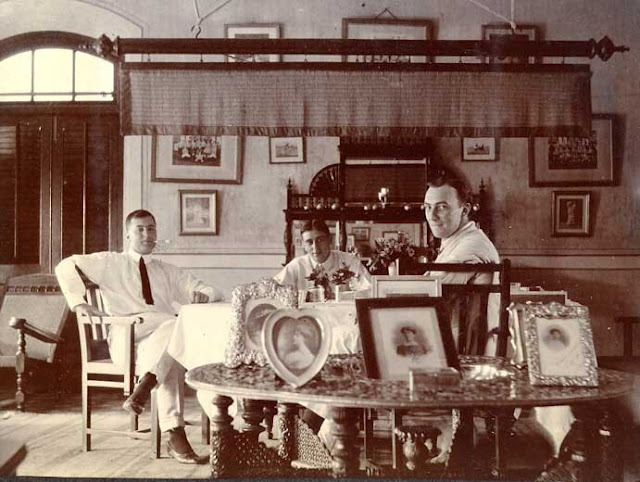
A restless punkah for respectful gentlemen
Punkah Wallah tradition in the USA
A chilling punkah was an integral part of the Southern states’ wealthy homes, but they had a different name. Slaves handled Ceiling-mounted fans. Yep, English gentlemen at least paid some pennies to deaf locals.
Interestingly, both the wealthy men and their slaves benefited from their interactions with the fans. Masters experienced the fans’ cooling winds, insect-free time, and the occasion to showcase their money and sophistication. Even though they were consigned to labor at the fans, enslaved workers likely used their proximity to elite whites to learn “genteel” codes of behavior, while gleaning information about the plantation world and beyond.
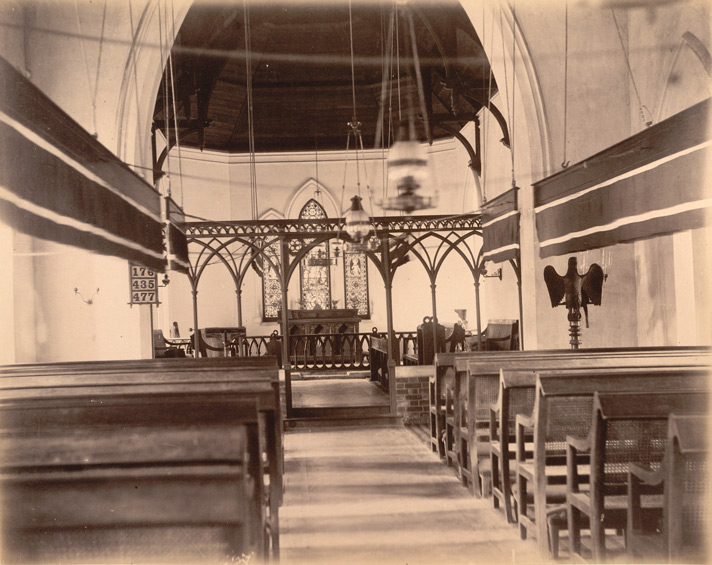
Punkahs were used in the cathedrals too.
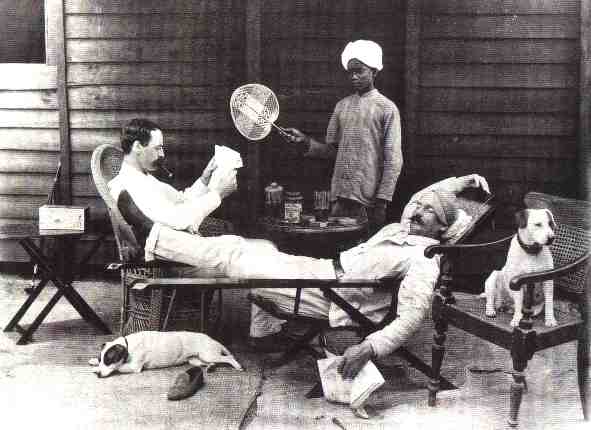
The most common Punkah Wallah was a deaf boy or man that held a fan in his hands.
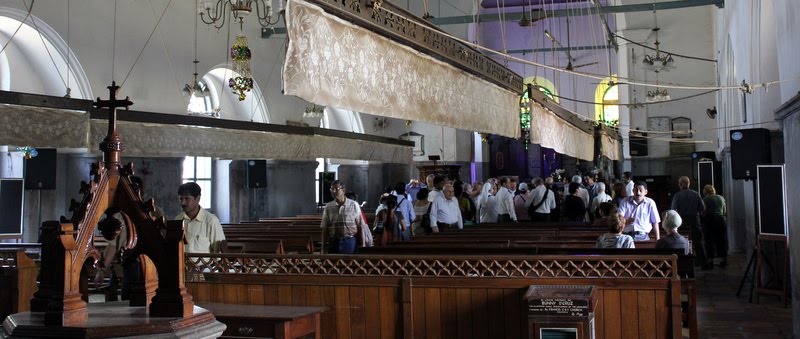
Modern Punkahs. No human resources were used for sure.
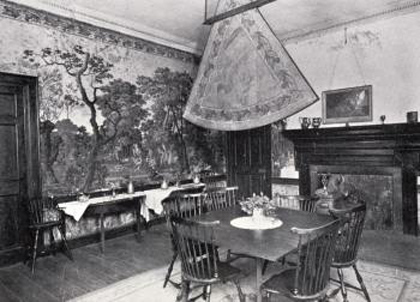
A fancy fan in a wealthy Indian home.
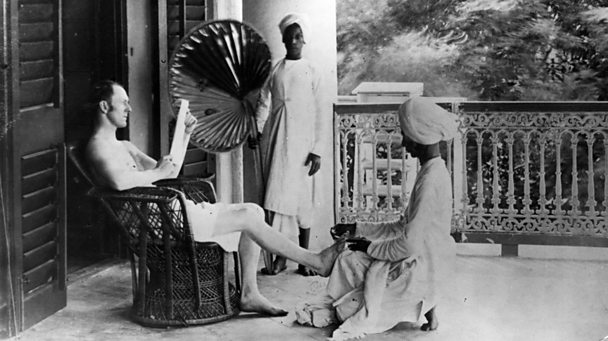
Fan-boy was a kind of demonstration of how wealthy the colonist is.
Сообщение Punkah Wallah: interesting facts and pictures появились сначала на Old Pictures.
]]>Сообщение Sleeping on a rope in London, 1930s появились сначала на Old Pictures.
]]>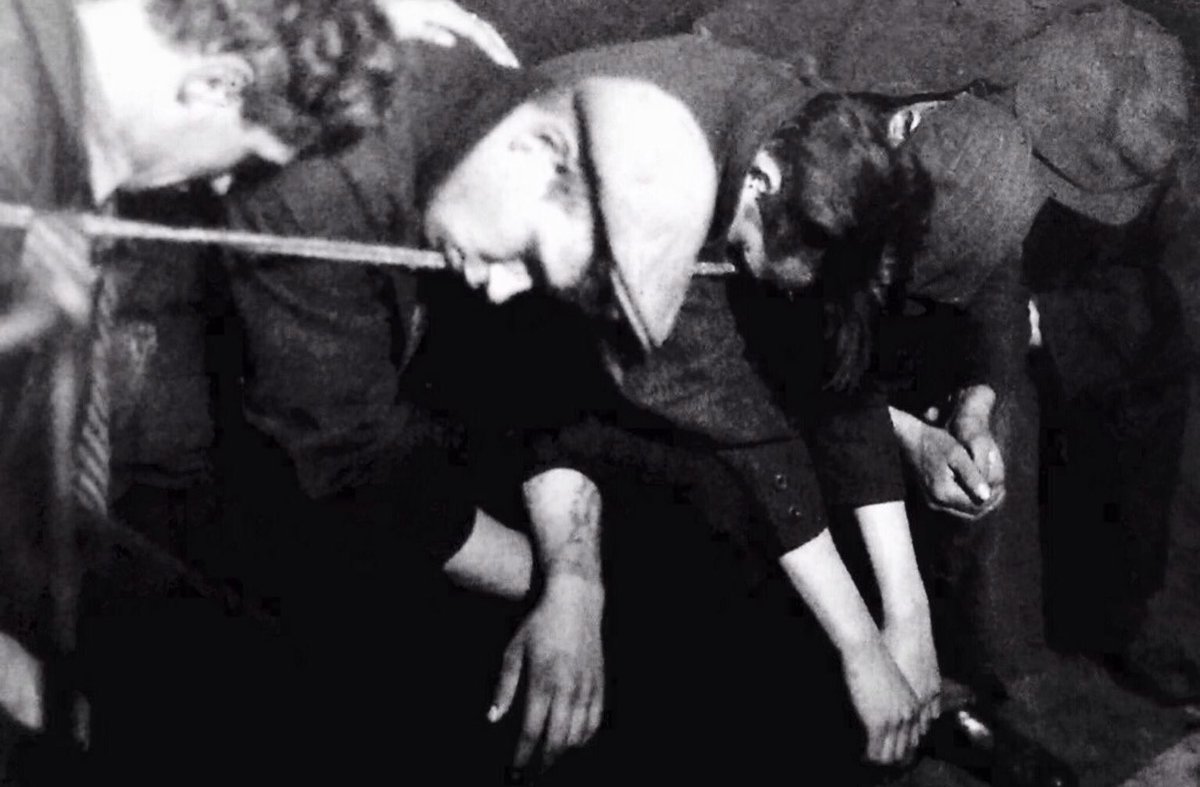 Sleeping on the rope was the cheapest option in the flophouses of London in the 1930s.
Sleeping on the rope was the cheapest option in the flophouses of London in the 1930s.
Look at this photo every time your own mattress feels too hard for you.
People who like to lament about what terrible time we live in, what terrible air we breathe, and what disgusting GMO we eat, obviously, have little idea of how our ancestors lived.
We thought that these eye-grabbing pictures belong to the Victorian era. People often did some bizarre things during this period. Everything looked weird: the way people swam in the sea, visited dentists, or even smiled.
But here’s a surprise, this photograph was taken in London in the 1930s. The scene is pretty clear: people are sleeping, hanging on ropes.
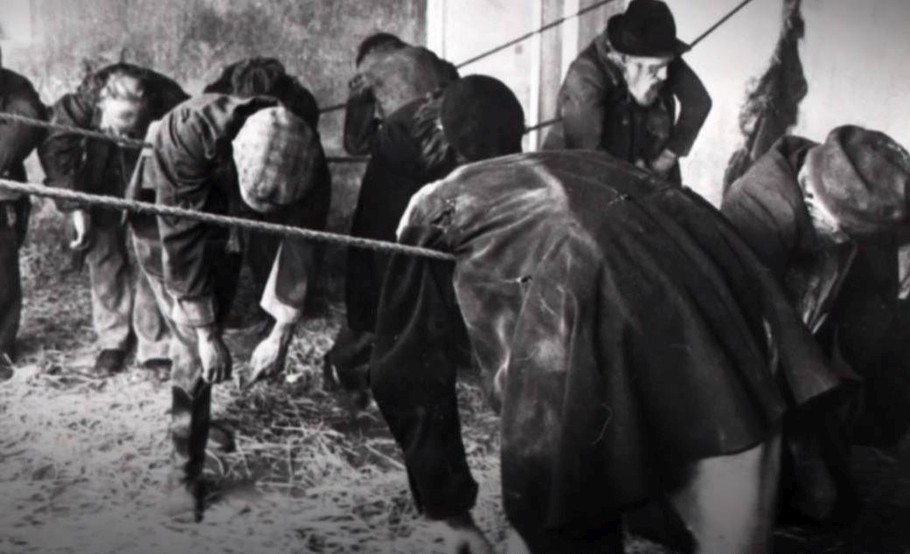
Sleeping on a rope cost 2 pence
Sleeping on the rope was a challenge
This comfort cost 2 pence and was called “twopenny suspension” among the townspeople. Orwell described it in detail in his book “Pounds of Dashing in Paris and London.”
“Overnight stay in a class slightly higher than the street class. In a two-penny hanger, clients are seated on a long bench with a rope stretched in front of them, which holds the sleepers like a transverse rail of a sloping rotten hedge. At five in the morning, a man mockingly called a valet removes the rope. I myself have not been in suspensions, but Chumar spent the night there often, and when asked if it was possible to sleep in such a position at all, he replied that it’s not so bad as weaklings ringing about it – it’s better than on a bare floor. There is a similar type of refuge in Paris, only there are not two pence, but twenty-five centimes (half a penny)”.
But if you were a lucky owner of four pence you, could afford to settle in one of the hard boxes covered with tarpaulin. A solid luxury option when compared with a “two-penny suspension.”
Read more: 100 most important pictures in history
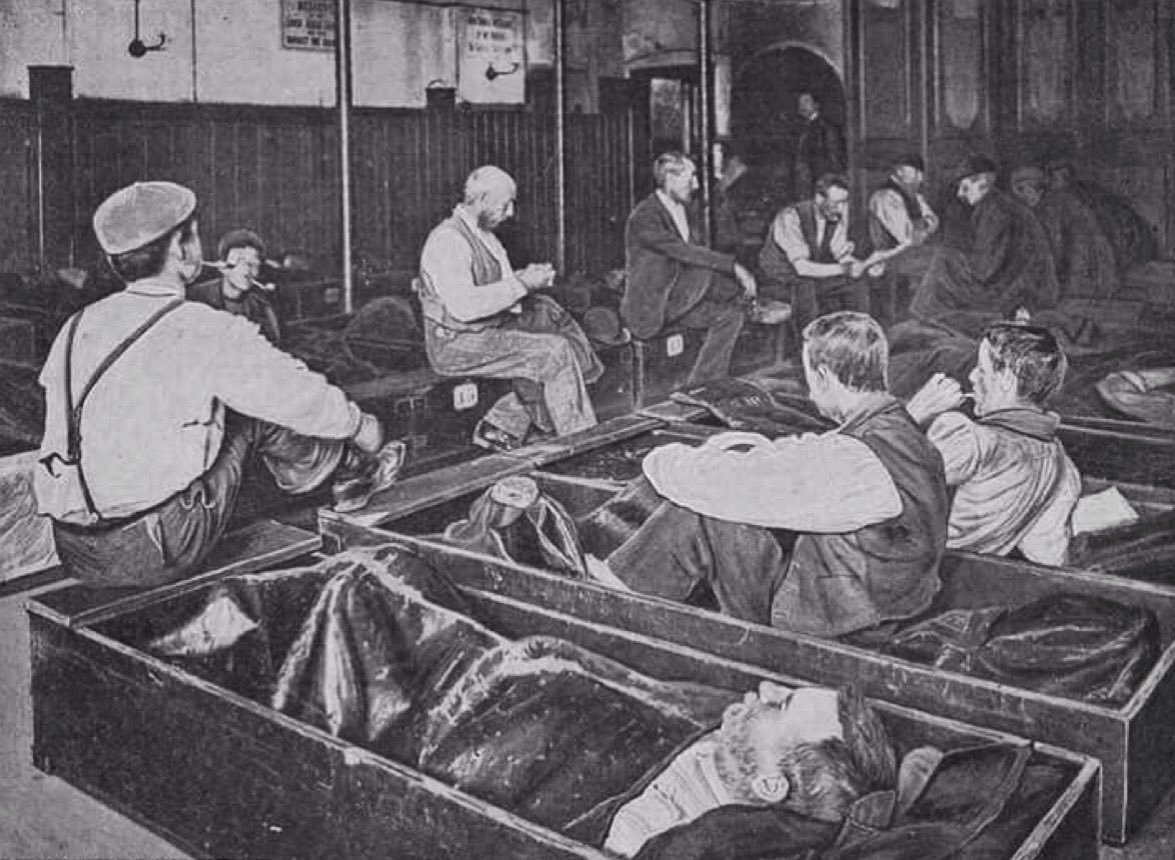
These Sleeping boxes were a more luxurious option in the 1930s.
Сообщение Sleeping on a rope in London, 1930s появились сначала на Old Pictures.
]]>Сообщение Unexpected dance of Princess Diana in theatre, 1985 появились сначала на Old Pictures.
]]>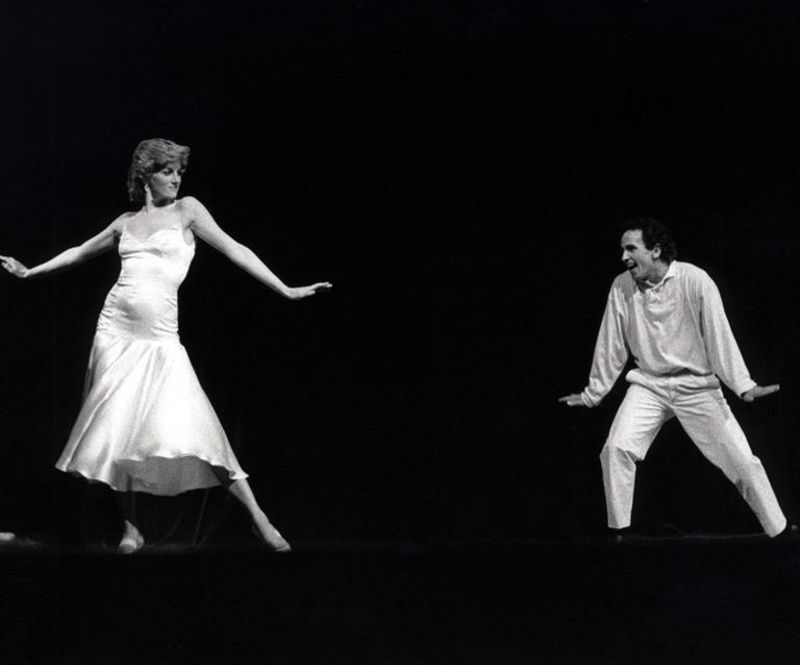 Princess Diana dance surprised her husband, Prince Charles, the royal family, and even the paparazzi.
Princess Diana dance surprised her husband, Prince Charles, the royal family, and even the paparazzi.
All girls dream of becoming princesses. And what about a girl who is already a princess? She dreams of becoming a ballerina! This was done by Lady Diana, daughter of the 8th Earl of Spencer.
Read more: 100 most important pictures in history
This dream hadn’t come to anything. The aristocratic origin (the count would hardly have been glad to see his daughter in the ballet troupe) was a problem. Add Diana’s height of 178 cm, which is not welcome too.
But the princess still found a way to make her dream come true. And it’s not about the legendary dance of Princess Diana with John Travolta at the White House.
It all happened during the Christmas show at the Royal Theater, Covent Garden on December 25, 1985. Diana left the royal box “for a second.”
To the surprise of her husband Charles and other royal family members, a second later, Diana appeared on stage. She was accompanied by a dancer and choreographer, Wayne Slip.
Diana and Wayne performed Wayne’s fiery and masterful dance to Billy Joel’s “Uptown Girl.”
How could Princess Diana keep dance preparations in secret?
The entire royal family was shocked. Even the paparazzi didn’t expect such a surprise. After all, the newspapers reported on Diana’s every step. But the princess managed to keep her preparations for the performance in secret for two months.
Wayne recalled later that he and Diana got encores for eight times. One of the bows is traditionally intended for the royal box, which the dancer whispered about in the princess’s ear. “I will not bow before them. My husband is there,” snapped Diana. Meanwhile, the princess easily knelt for the rest of the audience.
We bring to your attention rare photos of the legendary Princess Diana dance.
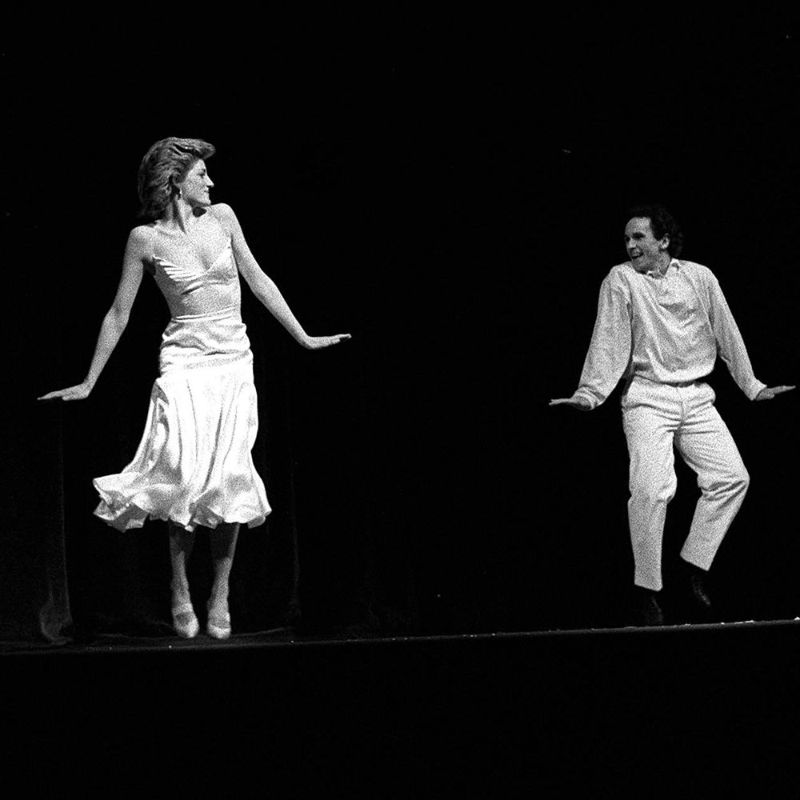
Diana chooses a popular song ‘Uptown Girl’ by Billy Joel for her performance.
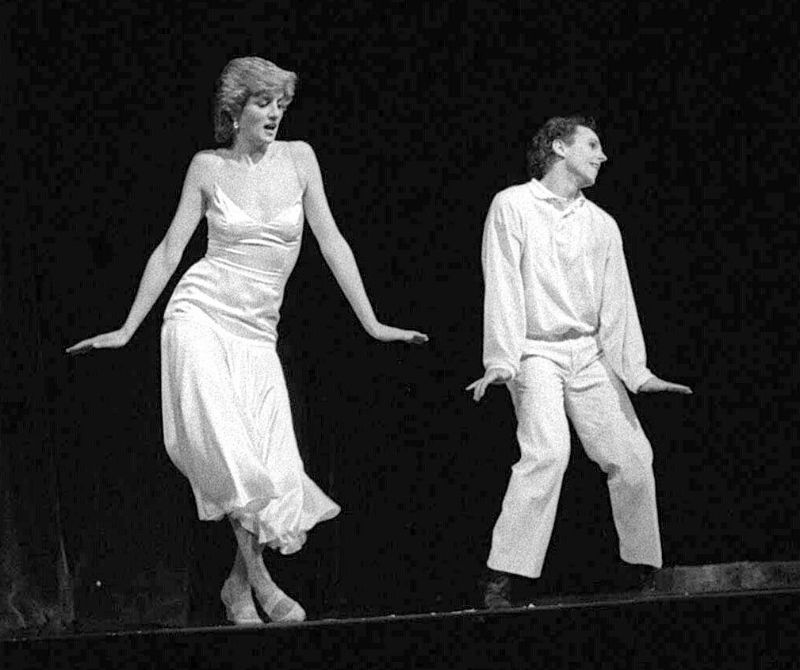
Lady Di kept it all in secret for two months.

Even the paparazzi were not ready for such a surprise.

Diana made an excellent performance on that day.
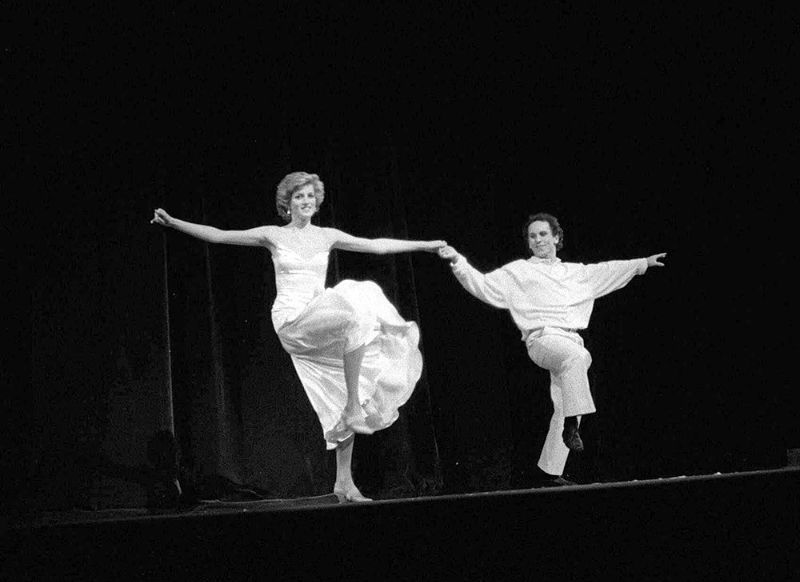
We still don’t know what the reaction of the Queen was
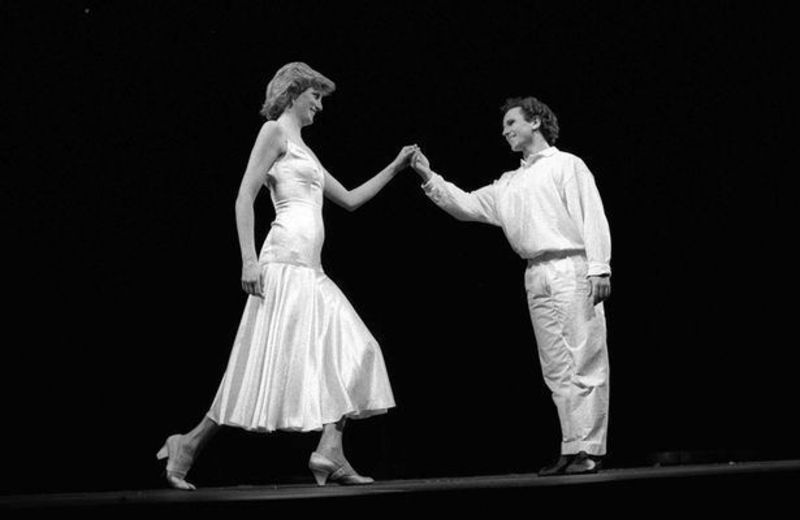
Yes, Princess Diana always dreamt of a dance career
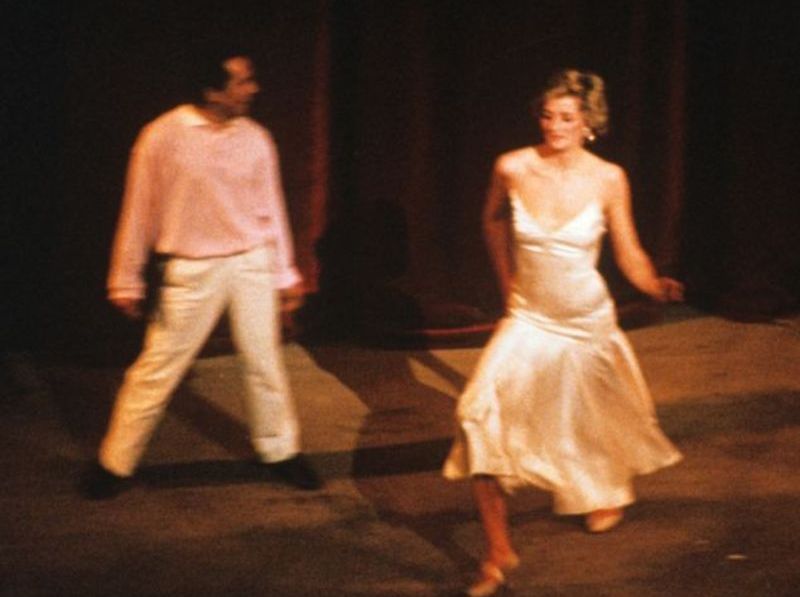
Prince Charles admitted that his wife has many talents
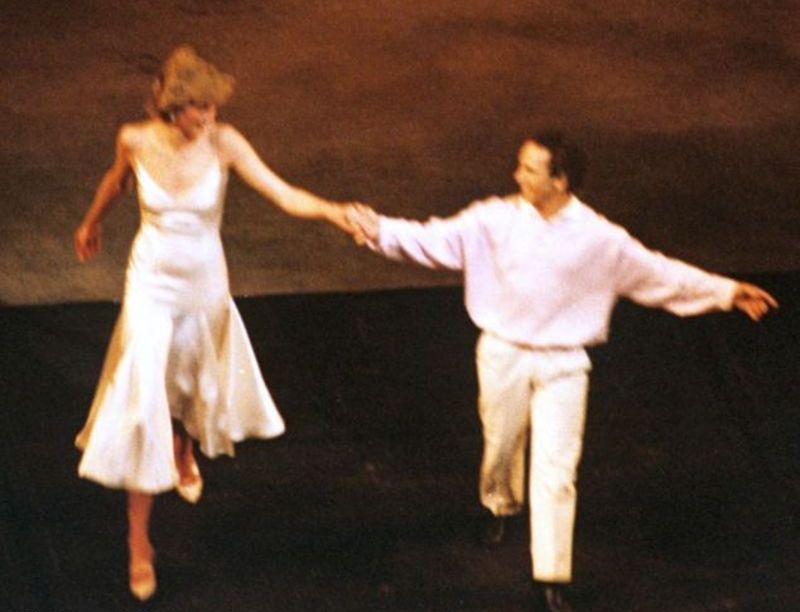
Diana refused to bow in front of the royal box
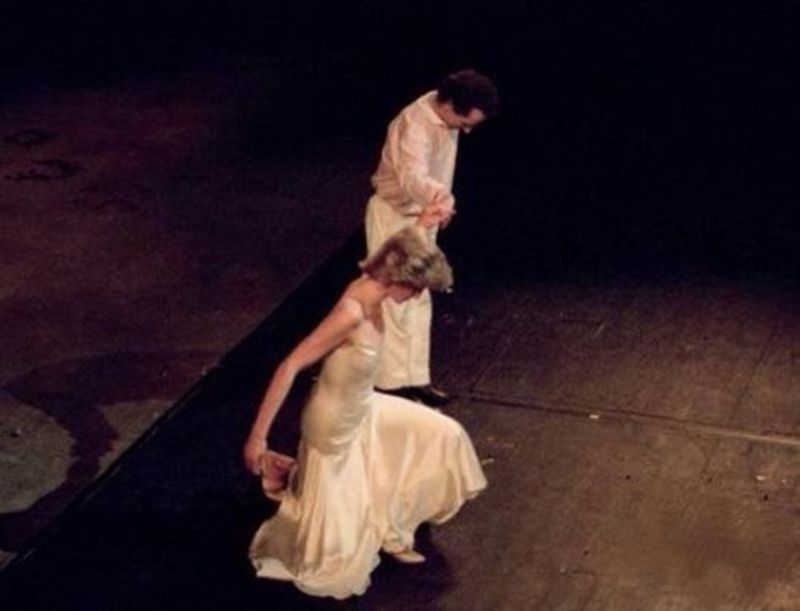
But she kneeled easily before the public
Сообщение Unexpected dance of Princess Diana in theatre, 1985 появились сначала на Old Pictures.
]]>Сообщение WWI Christmas truce in 1914: pictures and facts появились сначала на Old Pictures.
]]>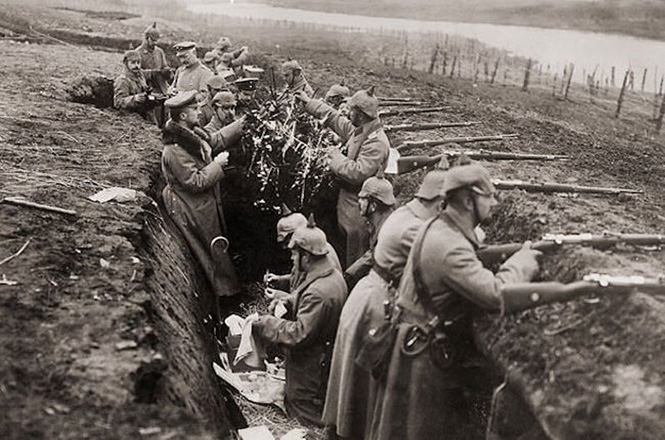 This fascinating story of the Christmas Truce of 1914 started on December 24, when the British watch noticed that the Germans were installing Christmas trees on their trenches’ parapet. Brits used to see machine guns there!
This fascinating story of the Christmas Truce of 1914 started on December 24, when the British watch noticed that the Germans were installing Christmas trees on their trenches’ parapet. Brits used to see machine guns there!
How the Christmas truce of 1914 became possible
Later reporters will call it a WWI Christmas truce of 1914. Of course, the decorations were primitive as they can be during wartime. The sparkling copper leading belts from shells decorated the Christmas trees. Garlands replaced bandages and telegraph tapes.
Read more: 100 most important pictures in history
But the fact itself did not fit in with the atmosphere of the hopeless massacre that had prevailed here for the past few months! Very soon, Brits heard the German Christmas song, Stille Nacht.
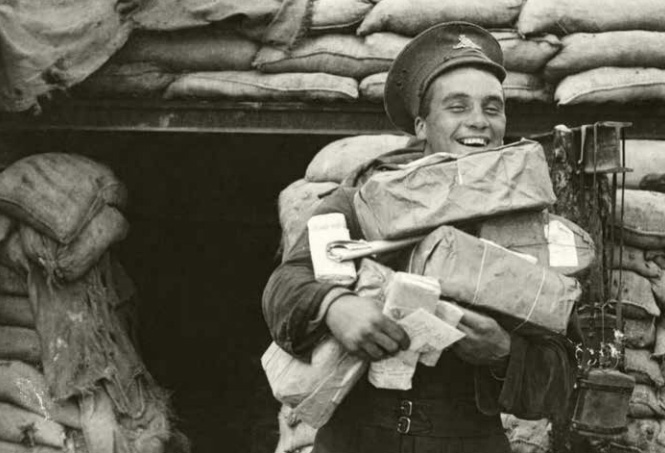
The British soldier is going to the no-man land to exchange Christmas gifts.
The shooter of the Royal Scottish Guards Graham Williams recalled that evening much later:
I was in the trench, watching the German line of defense. I was thinking about how different this holy night was from those that I had before … When suddenly lights appeared here and there near the German trenches. The light came from the candles lit on Christmas trees. The candles burned evenly and brightly in the calm and frosty evening air. Other sentries rushed to wake the sleeping people. “Look what is happening!”
And at that moment, the enemy began to chant Stille Nacht, Heilige Nacht. In fact, it was the first time I heard then this hymn, which was not so well known in our country. The Germans finished singing, and we thought we had to respond with something. And we sang the psalm First Nowell, and when we finished, there was friendly applause from the German side. They followed with another Christmas song, beloved by the Germans – O Tannenbaum. The Kaiser’s soldiers began to go out to the neutral zone with exclamations: “Merry Christmas, British!” They carried gifts in their hands instead of weapons.
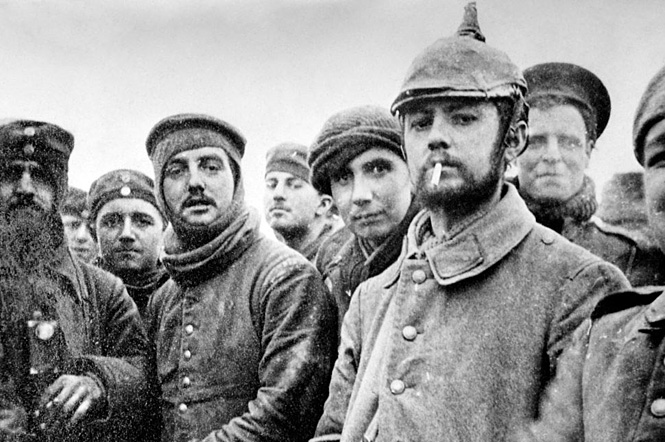
WWI Christmas truce in 1914
Here’s how the Germans and the British soldier began to go out to no man’s land to celebrate WWI Christmas truce of 1914. An English officer recalls:
I looked out of the trench and saw four German soldiers emerging from their trenches and heading in our direction. I ordered two of my men to meet the “guests”, but without weapons, since the Germans were not armed. But my guys were afraid to go, so I went alone. When the Germans approached the barbed wire, I saw that they were three privates. One of them said in English that they only want to wish us a Merry Christmas.
I asked what order the Germans received from the officers since they walked in our direction. They replied that there was no order, they went without permission. We exchanged cigarettes. When I returned to the position, the trenches were empty. I was surprised to find a crowd of 100-150 British and German soldiers. They laughed and celebrated. After a while, I noticed two German officers and through an interpreter told them that they should meet in a no man’s land and without weapons. One of the enemies admitted that he dreamed of an imminent end to the war, and I agreed with him.
Exchanging the Christmas gifts in the trenches
The soldiers of both armies received Christmas parcels from home. They could exchange small gifts: food, tobacco, various alcohol, even buttons, and hats were used. More than one hundred thousand Germans, British and French along the entire Western Front, stopped killing each other that night. Right between the lines of the trenches, the military priests performed the Christmas service.
Instead of organs of city cathedrals, soldiers sang. Former enemies together collected and buried the bodies of the killed, decomposed for months in funnels. They performed funeral services and prayers together.
In some front sectors, the truce lasted only one night, but in some places, the WWI Christmas truce of 1914 lasted a week until the New Year. It turned out that propaganda clichés are inexpensive: having started to communicate, the “Hans” and “Tommy” quickly realized that their opponents were not all the fiends from hell. Hatred disappeared, giving way to the friendliness of people in an equally bad situation.
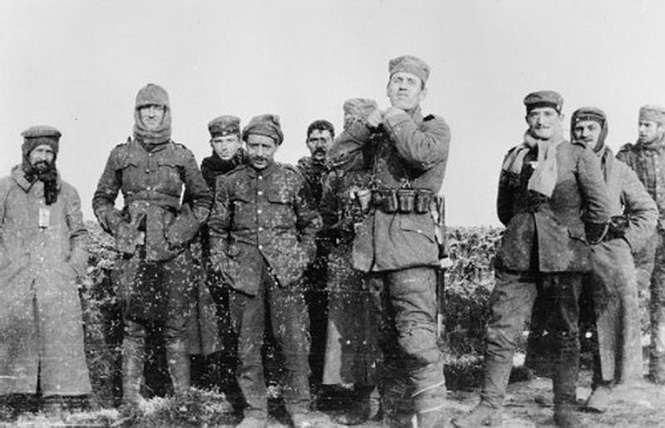
The Christmas of 1914 at Ypres
The football match during the Christmas truce
After the nightly Christmas services and the exchange of gifts, the miracles continued on the very day of Christmas. The soldiers came out of the trenches again and began to play football in the no-man land!
The bars of the gate were stakes in the ground. A stew can could serve as a ball. Each team could have an arbitrarily large number of players: no one really cared about the rules.
Ironically, the soldiers played football near Ypres’s town, which will give a name to the most deadly gas of WWI. The Yperite gas, or the Mustard gas, was dangerous because no WWI gas mask could stop it.
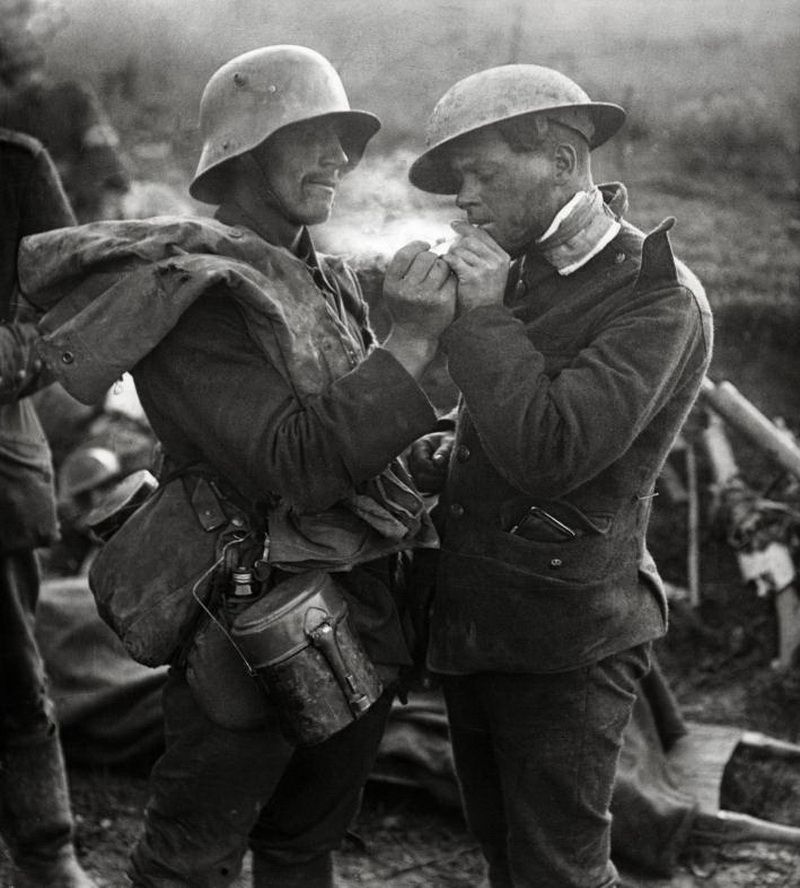
German and British soldier during the Truce
The punishment
When information about the soldier’s willfulness reached the authorities, the reaction on the WWI Christmas truce of 1914 was immediate. The guilty were punished, and the fire began. The commander of the British II Corps, General Horatio Smith-Dorren, issued an order prohibiting any communication with the enemy. The commander of the Scottish Guards, Sir Ian Calhoun, was nearly shot for “aiding the enemy.” Only the personal intervention of King George V saved an officer. The King considered it unethical to shoot a knight and a relative of his prime minister.
By the way, some germans expressed dissatisfaction with the “outrageous” fact of fraternization with the enemy. The little known corporal from the 16th Bavarian Reserve Infantry Regiment was the one among them. Corporal’s name was Adolf Hitler.
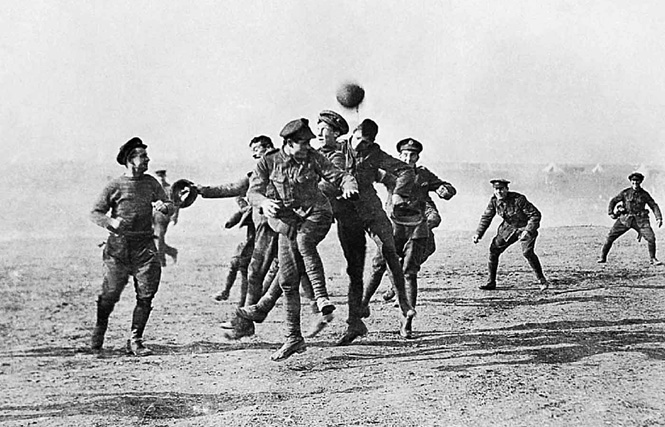
Soldiers playing football during WWI Christmas truce in 1914
They tried to hide the Truce.
For almost a week, governments and military censorship managed to hide information about the unauthorized Christmas truce in 1914. But still, the truth soon surfaced: the New York Times reported on an unusual event, and in early January, the British Daily Mirror and Daily Sketch reprinted American photographs.
Governments tried to suppress any attempts to reconcile the soldiers on major Christian holidays in advance. Since 1915, the British artillerymen were ordered to increase the intensity of German positions on the eve of Easter and Christmas.
Commandant reshuffled units in different sectors of the front in order to prevent the establishment of any comradely ties with the Germans. There was no more such a Christmas truce as it was in 1914.
Сообщение WWI Christmas truce in 1914: pictures and facts появились сначала на Old Pictures.
]]>Сообщение Mass brawl of rockers and mods on the beach, 1964 появились сначала на Old Pictures.
]]>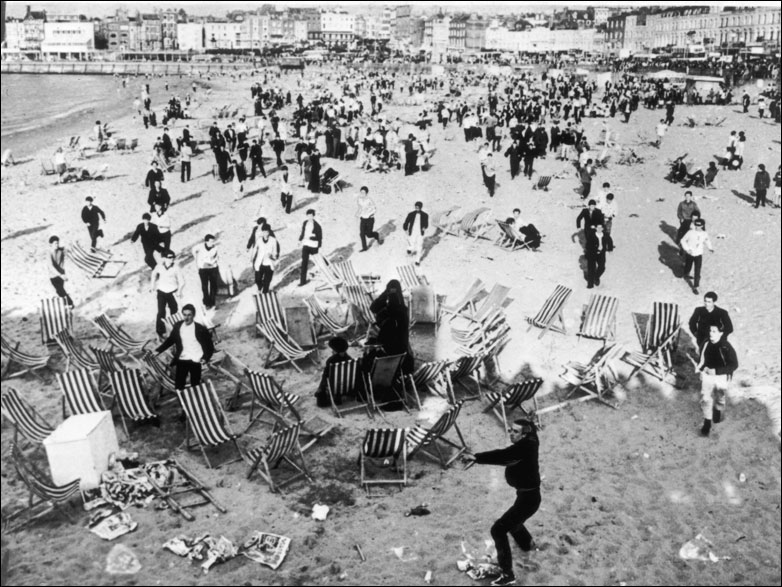 This historical clash of two militant subcultures of rockers and mods became legendary soon. They literally occupied the streets of London in the 1960s. The conflict was inevitable, and it’s a huge part of Rock music history of the 60s.
This historical clash of two militant subcultures of rockers and mods became legendary soon. They literally occupied the streets of London in the 1960s. The conflict was inevitable, and it’s a huge part of Rock music history of the 60s.
Who were Rockers and Mods
The Rockers seem pretty straight up to us. They wore leather jackets, drove motorcycles. Rockers also refused to use helmets: they ostentatiously despised safety and didn’t want to ruin their fancy hairstyles. As you may also guess, they listened to rock’n’roll.
The Mods preferred tailored jackets, and their girls walked around in miniskirts. They used neat scooters as fashion transport, and they listened mainly to the soul, R’n’B, and ska.
The media well covered the feud between these two movements in the early 1960s. But now let’s get to the picture of the mass brawl of rockers and mods on the beach.
The hot summer of 1964
The clashes between mods and rockers peaked in the spring and summer of 1964. It was hot, and representatives of both subcultures rushed to the beaches of coastal English towns. Journalists followed them, looking for sensations and spicy pictures. And they got what they wanted in May when mods and rockers staged a series of grandiose fights.
Mods were armed with switch knives, rockers used chains, and both parties used broken sun loungers. The two-day brawl on the beach in Hastings on May 18 and 19, 1964, was the most famous. The media called this fight “The Second Battle of Hastings.” The judge handed out fines to the most active participants in the fight, called them “Rag Caesars.”
You will be surprised, but the beach’s fights were often won not by tough rockers, but by stylish mods. The police even had to take the rockers in the ring to prevent further injuries.
Mods and rockers in music history
The confrontation between mods and rockers became a bright part of music history in the UK. For example, based on the album The Who, the movie Quadrophenia tells a lot about those conflicts.
Sociologist Stanley Cohen did special research and called it People’s Demons and Moral Panic. By the way, he invented the term “moral panic.” In fact, this panic is being provoked and inflated by the public and the media. For example, Cohen argued that clashes between rockers and fashion in the 1960s would have been less aggressive and frequent if journalists and public figures had not fueled them.
Сообщение Mass brawl of rockers and mods on the beach, 1964 появились сначала на Old Pictures.
]]>Сообщение Nine European kings in one photo, May 1910 появились сначала на Old Pictures.
]]>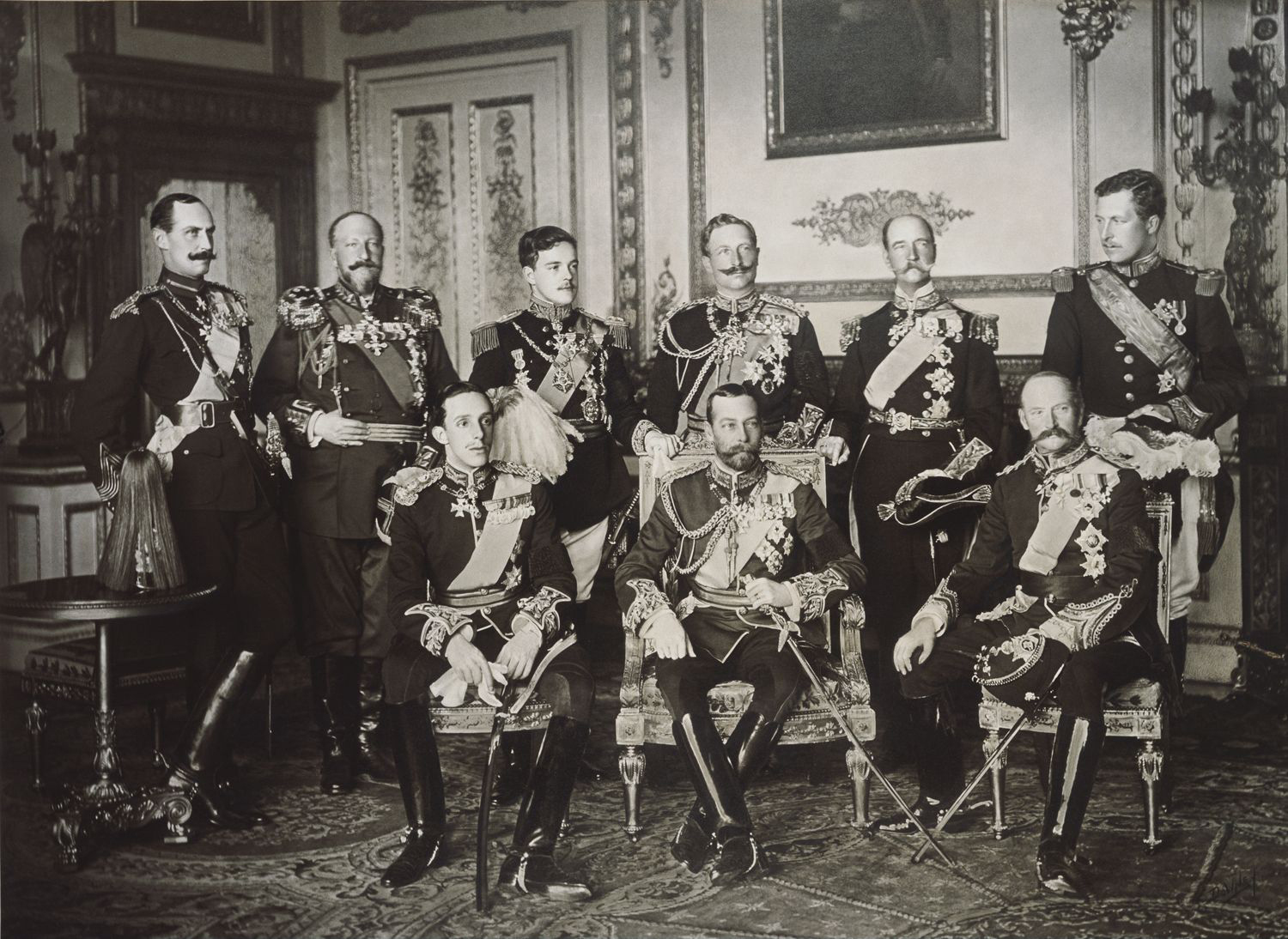 Ironically, these nine kings will be at war (WWI) less than five years after this photo was taken.
Ironically, these nine kings will be at war (WWI) less than five years after this photo was taken.
Nonetheless, there was no high tension between monarchs on May 20, 1910. On this day, masters of the W&D Downey photo studio took this historical image of Nine European Kings at Windsor Castle.
They never gathered together before this day.
Standing: King Haakon VII of Norway, King Ferdinand I of Bulgaria, King Manuel II of Portugal, German Emperor and King of Prussia Wilhelm II, King George I of Greece, and King Albert I of Belgium.
Sitting: King of Spain Alfonso XIII, King of Great Britain and Ireland, George V, and King of Denmark Frederick VIII.
Nine Royal relatives in a photo
There was a reason for all these nine kings to pose for a single photo. All of them were connected with family bonds. For example, Frederik VIII of Denmark (sitting, far right) was a daddy of Haakon VII of Norway (top left). The German ruler Wilhelm II of Germany (top, 3rd from the right) was a cousin of both George V of the United Kingdom (bottom center) and Queen Maud of Norway, who was wife to Haakon VII of Norway and sister to George V of the United Kingdom. Let’s not forget that Haakon VII of Norway and George V of the United Kingdom were brothers-in-law. George V of the UK and Queen Maud of Norway’s mother was incidentally Alexandra of Denmark, sister to Frederik VIII of Denmark. Here’s how Frederik VIII of Denmark was also the uncle of George V of the United Kingdom.
Read more: US WWI propaganda posters.
Again, George was a grandson of Queen Victoria and Prince Albert and the first cousin of Russian King Nicholas II of Russia and Kaiser Wilhelm II of Germany. By the way, Nicholas II also could be present in this photo, but he didn’t manage to come in time.
What will happen to the Nine Kings after this photo
All these elegant and brilliant representatives of their dynasties came together to send off the last journey of the English king Edward VII. They do not yet know what awaits them in the very near future.
The revolutions and social transformations will remove four of nine of these monarchs. One of them will be killed (George I of Greece was shot in March 1913 in Thessaloniki).
In less than five years, Britain and Belgium will fight side by side against Germany and Bulgaria in WWI. Peter of Serbia (another king missing in this photo of the nine) will fight on King George’s side.
Only five of these nine monarchies will survive Norwegian, Spanish, English, Danish, and Belgian.
Read more: Adolf Hitler during WWI: historical facts and pictures
Сообщение Nine European kings in one photo, May 1910 появились сначала на Old Pictures.
]]>